Planet Scenes 2012 - 2017
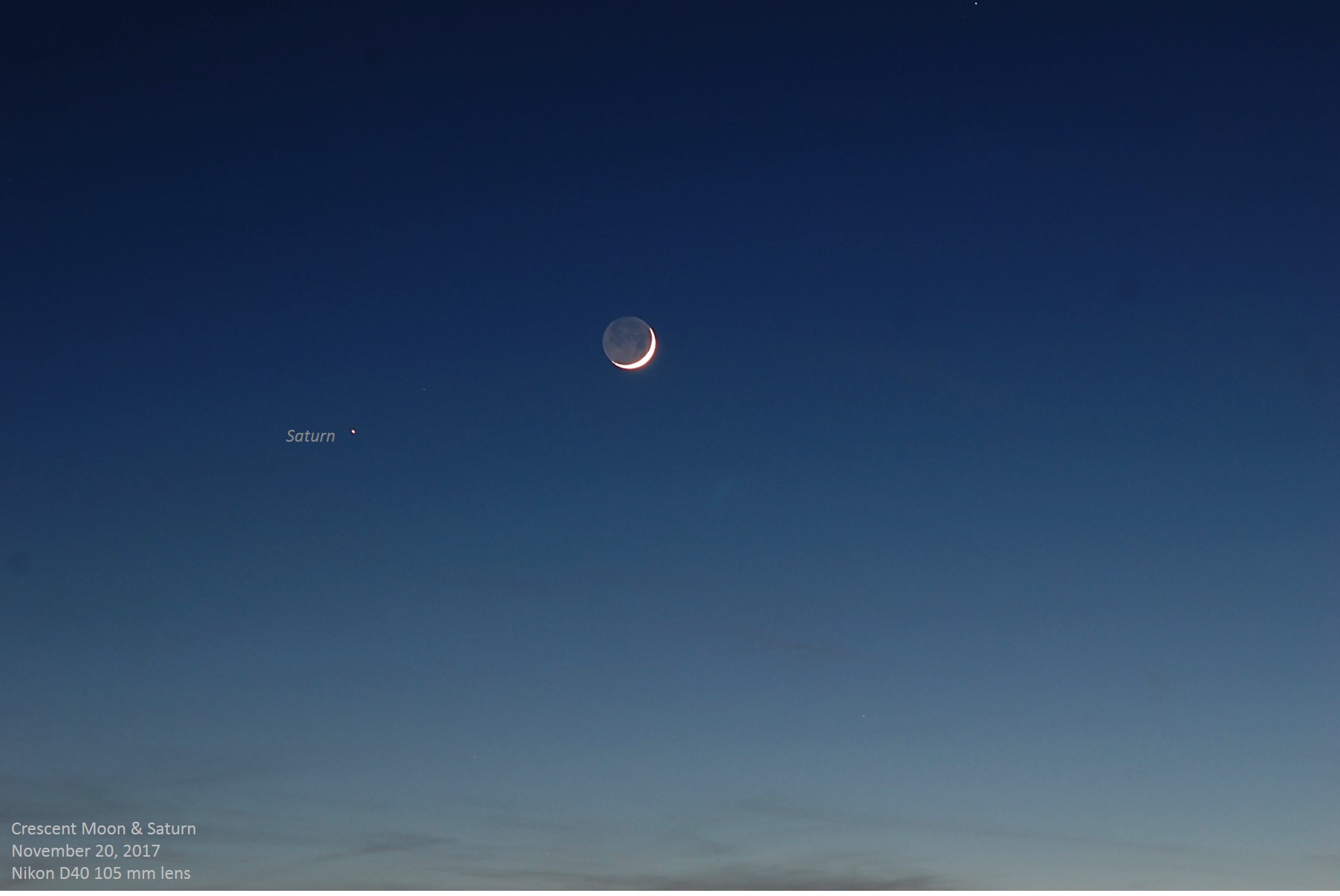 |
November 2017 Decent shot of Saturn and the crescent Moon over the horizon looking west from my new house in east Stafford County, Virginia. |
||
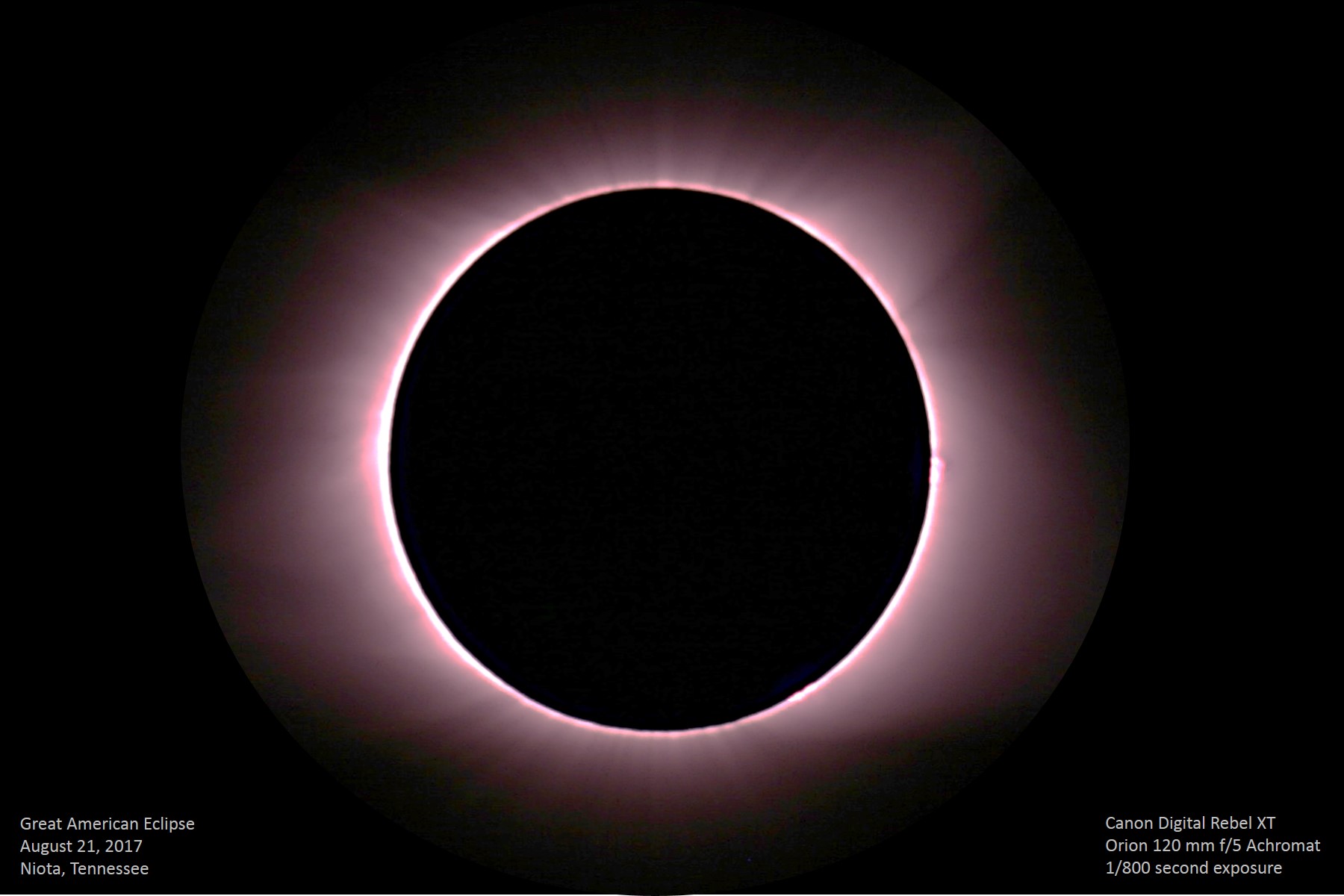 |
August 2017 We saw the total eclipse of the Sun from Niota, Tennessee, and it was spectacular! This was the saros series successor to the August 1999 eclipse across Europe that we missed out on due to clouds. |
||
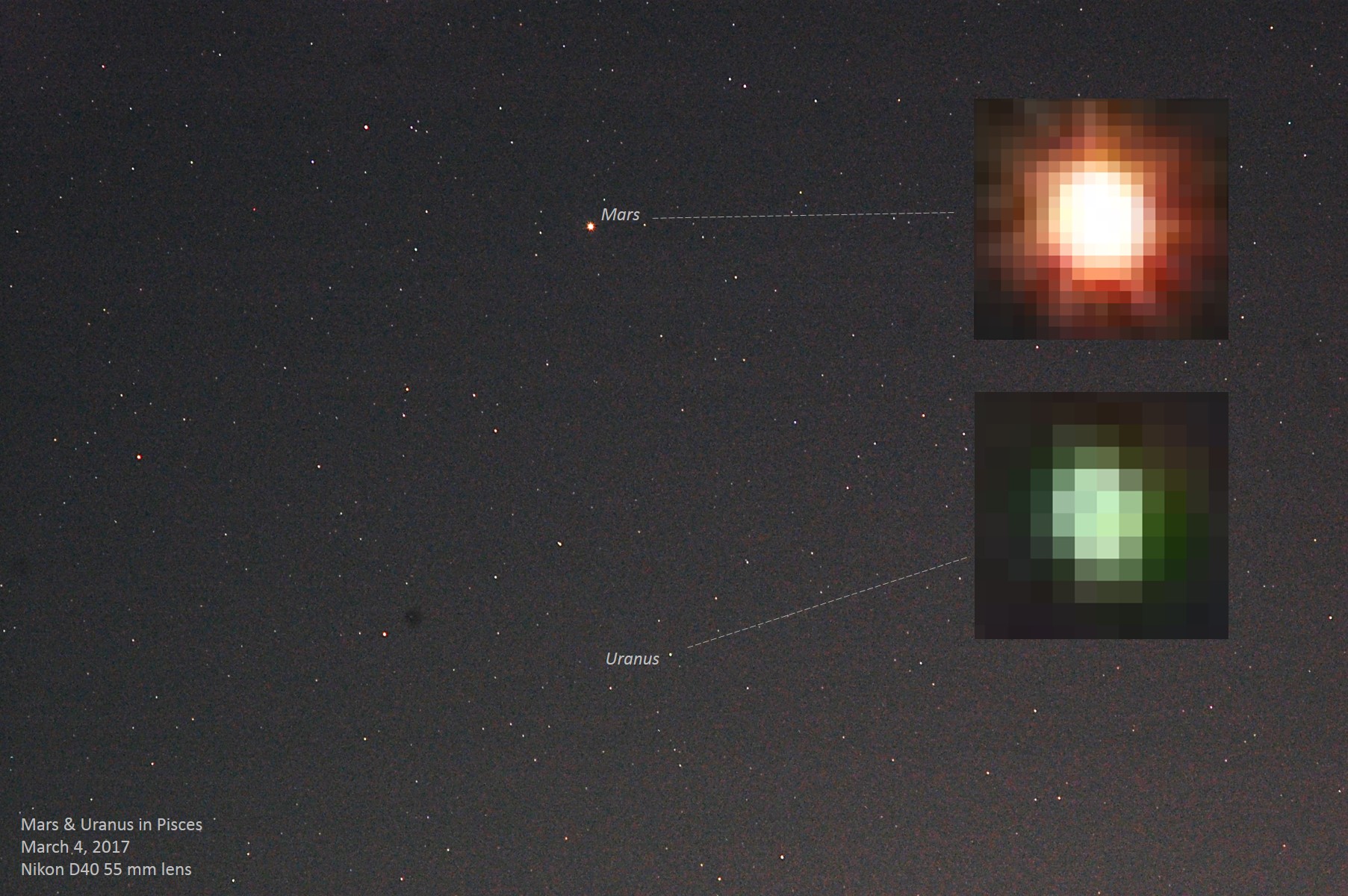 |
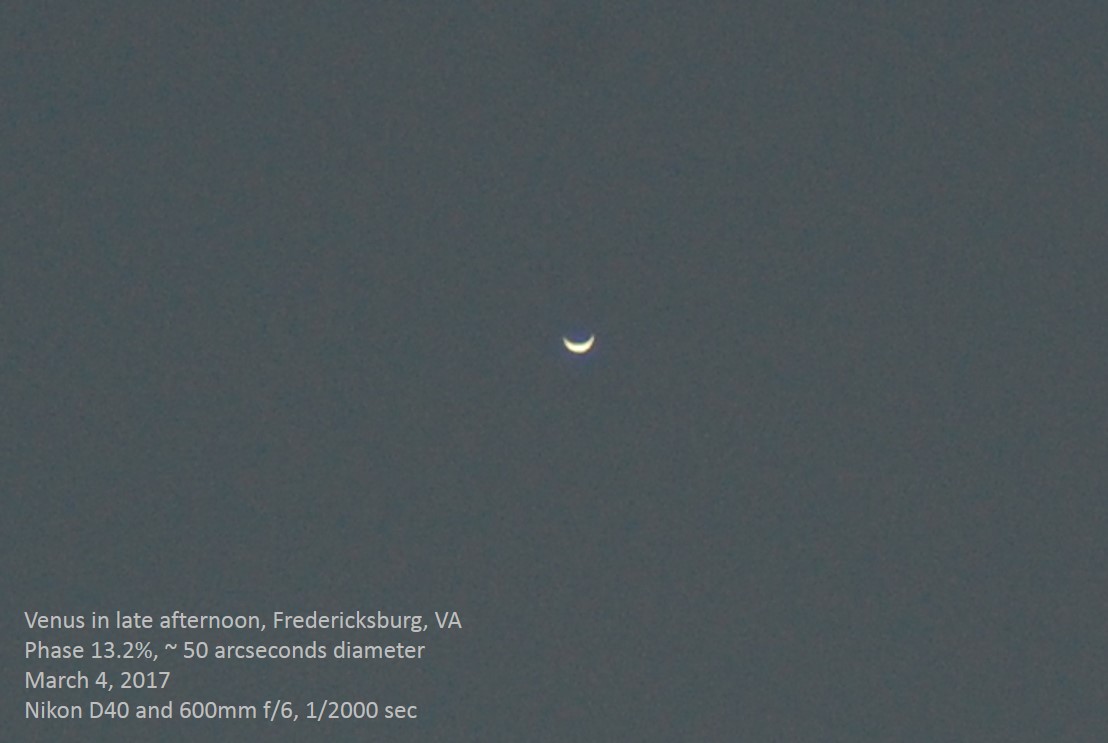 |
March 2017 In this series of images, I captured Mars above Uranus along the ecliptic, which means in reality it is east and slightly north of Uranus. I zoomed in so far to see the actual pixels recorded for each planet so we can see what colors the camera detected in the two cases. Uranus' green color is real! The second image is an afocal view of Venus through my 120mm f/5 refractor. Venus will be going through inferior conjunction about three weeks from now, so we can see that its phase is decreasing while its angular size is increasing. |
|
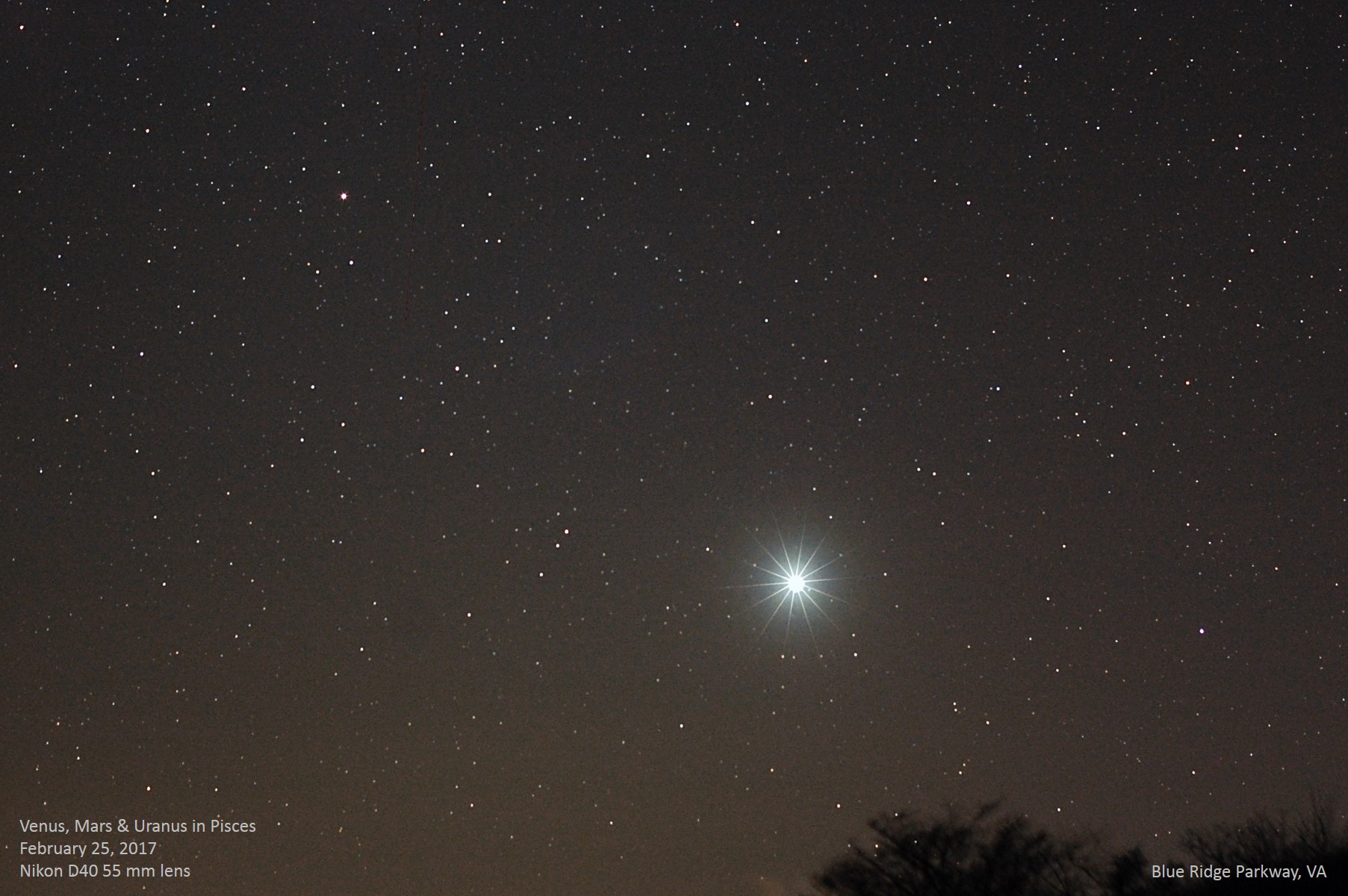 |
February 25, 2017 Venus, Mars, and Uranus were strung out along the ecliptic in early 2017, although by this time, Venus had begun to seriously bend north of the ecliptic in preparation for its inferior conjunction in March. This image was taken at one of the overlooks on the Blue Ridge Parkway. |
||
 |
December 28, 2016 Planets bright to dim are navigating the celestial sea at the end of the year. Here we see the brightest planet, Venus (magnitude -4.32), in eastern Capricornus, Mars (magnitude +0.86) near σ Aquarii, and Neptune (magnitude +7.93) just above Mars. |
||
 |
December 20, 2016 Mars and Neptune were rather close together in Aquarius in the evening sky in late 2016; here we see them in western Aquarius, on opposite side of σ Aquarii. Mars will scoot by Neptune on 31 December 2016. |
||
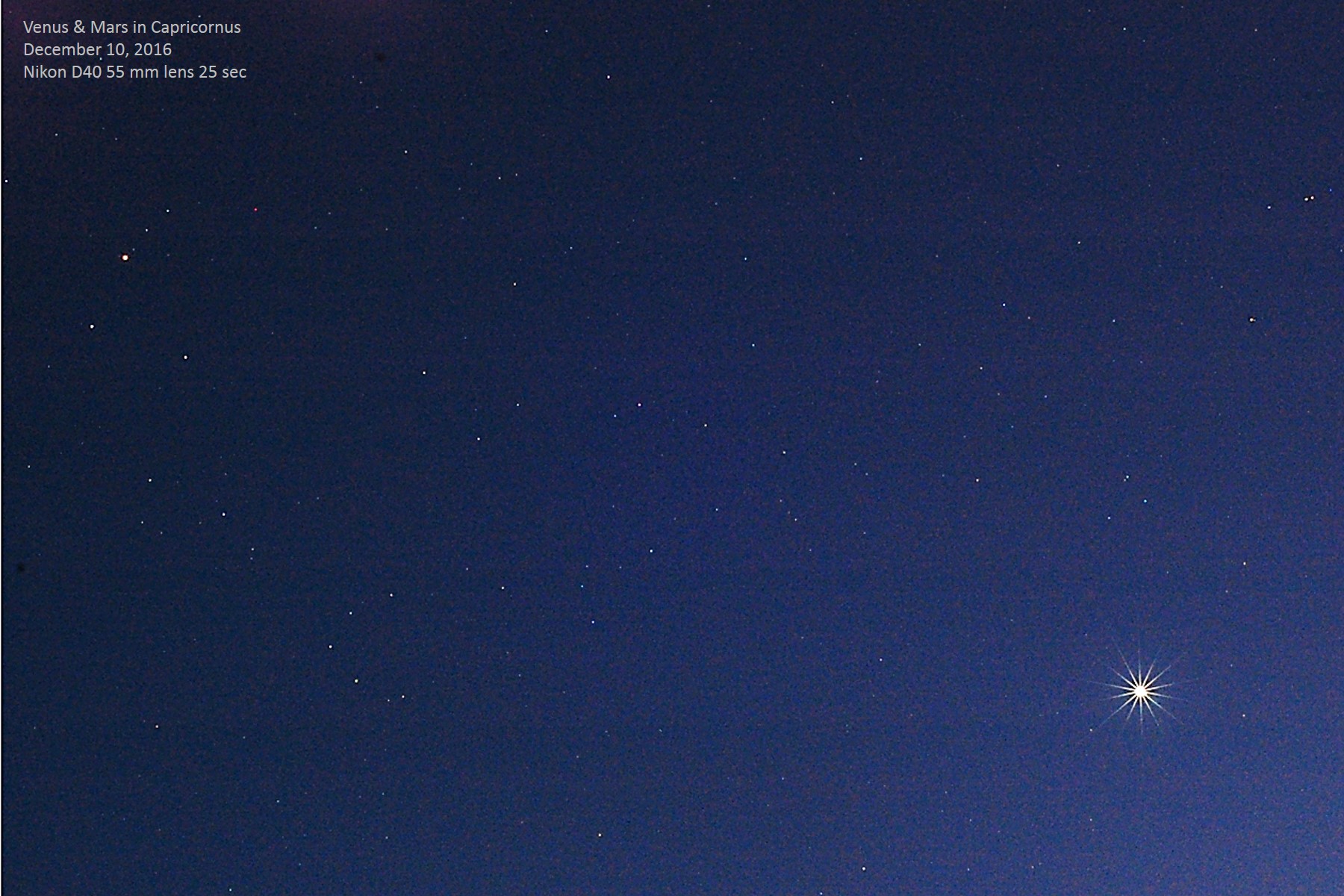 |
December 10, 2016 Venus and Mars gathered in the evening sky in late 2016; in this view they can be seen on opposite sides of Capricornus. They are both south of the ecliptic and moving very rapidly, with Venus barely outpacing Mars until sometime in February when Venus will begin to slow. |
||
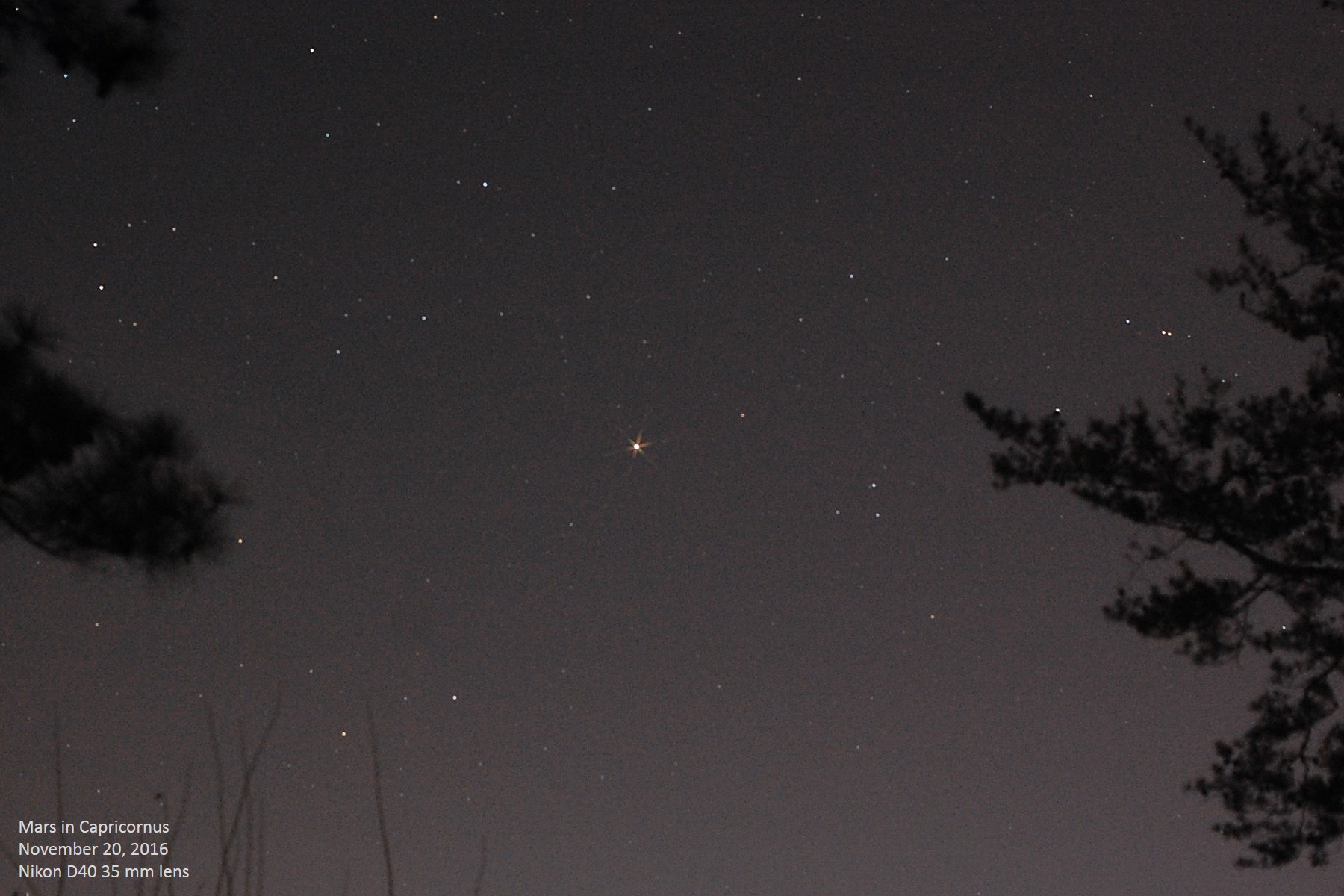 |
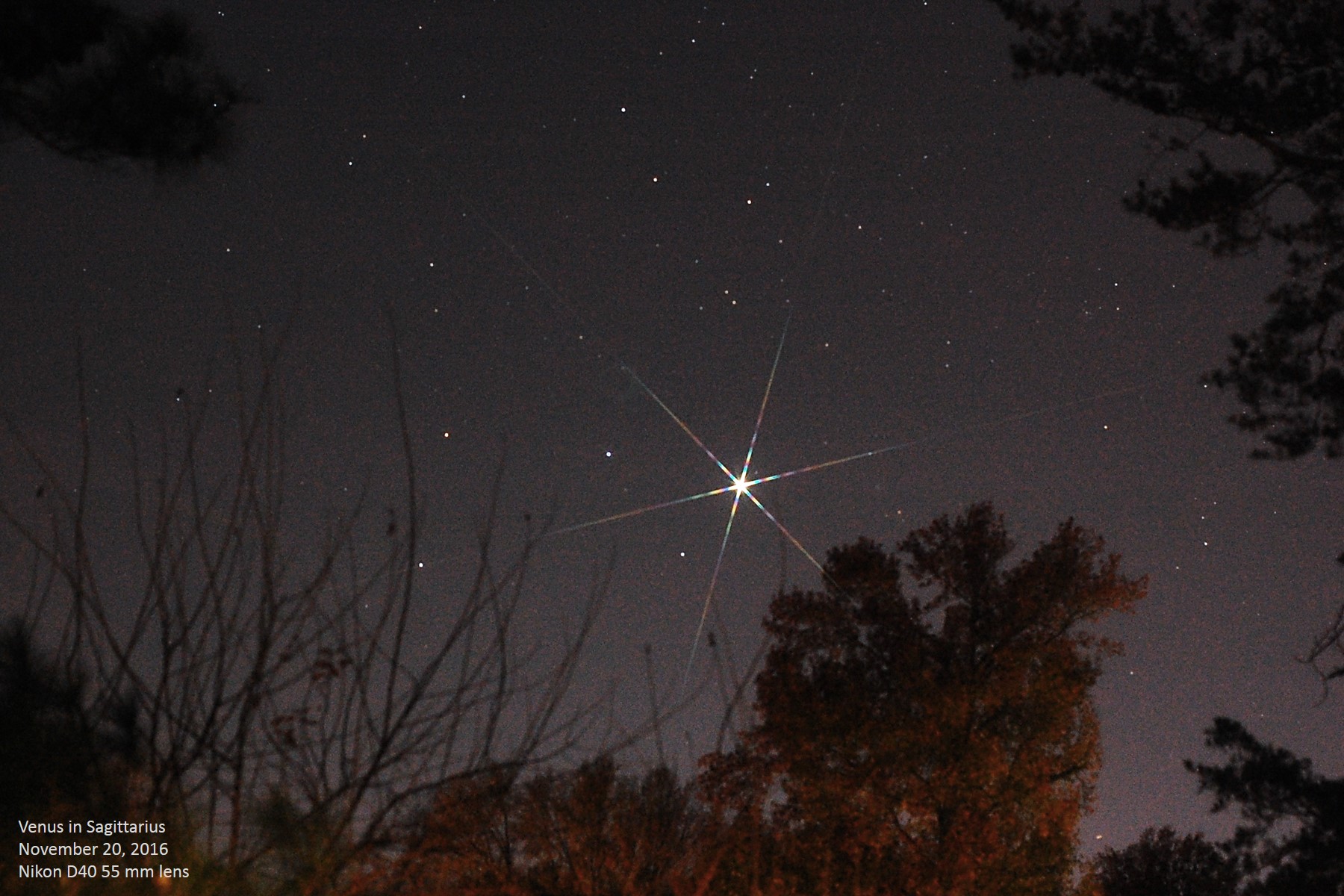 |
November 20, 2016 Mars is in Capricornus, moving rapidly eastward against the stars during a long climb up the ecliptic in the "post-opposition" phase of its apparition, to ultimately conclude in superior conjunction on July 26, 2017 in Cancer. Venus is lower down in the evening sky, in Sagittarius, repeating a pattern she performed in 1984, 1992, 2000, and 2008. |
|
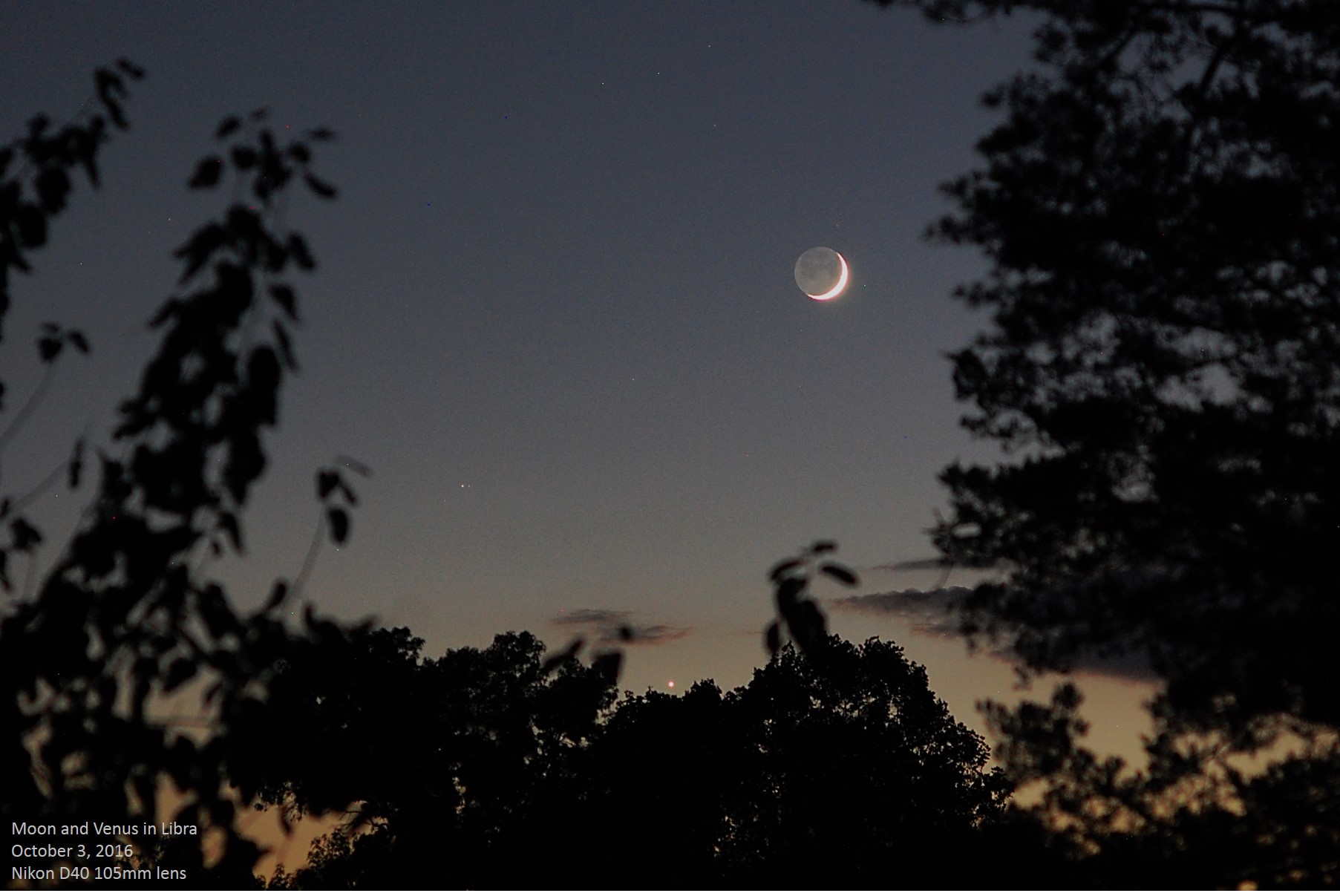 |
October 2016 In early October, 2016, we had a nice pairing of the crescent Moon and Venus in the evening sky, with a little bonus of seeing them near the double star α Librae. |
||
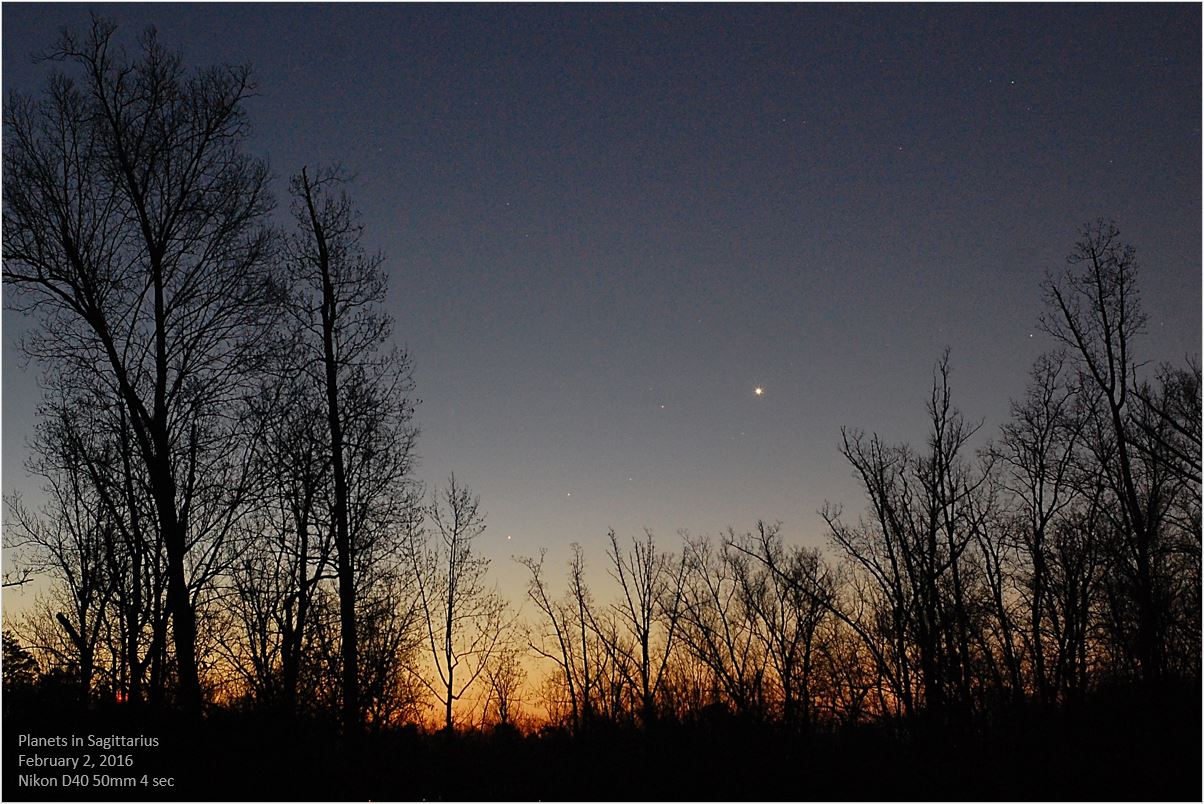 |
February 2016 Venus and Mercury pair up in the Teaspoon asterism of Sagittarius. |
||
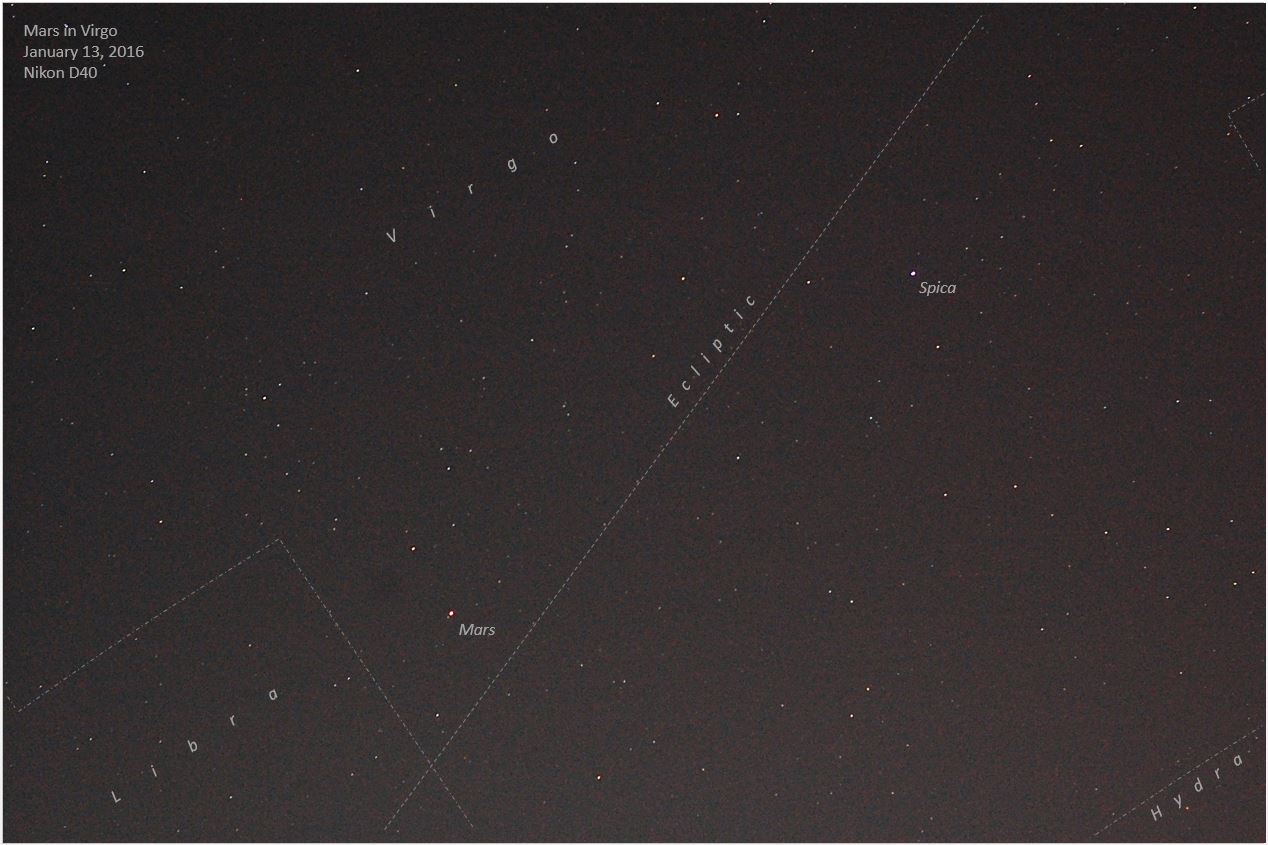 |
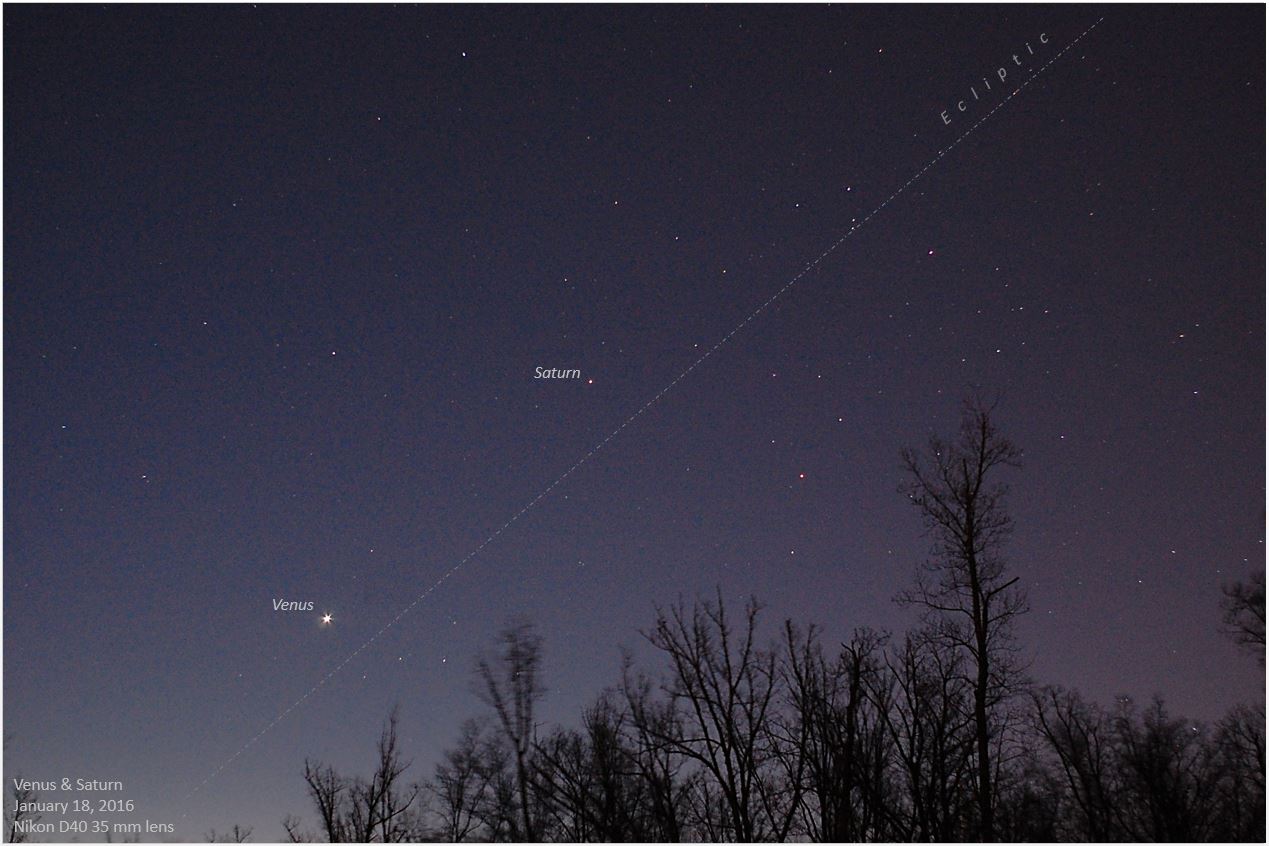 |
January 2016 Venus and Saturn gathered in the morning sky in early 2016 as Saturn prepared to spend the year in Scorpius. Meanwhile, Venus is rapidly ending its long morning apparition as it sinks lower into the dawn sky each day. Mars is off to their right, up in the constellation Virgo during the first half of January, preparing for its opposition in the head of Scorpius during May 2016. |
|
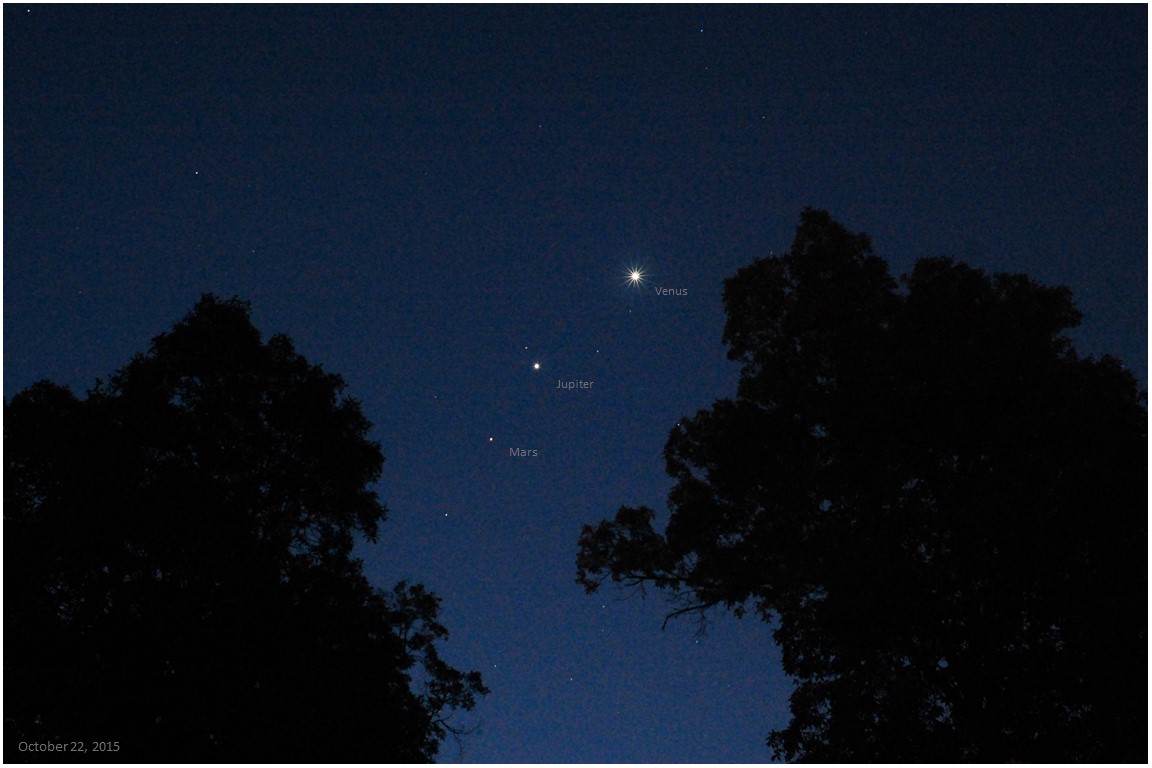 |
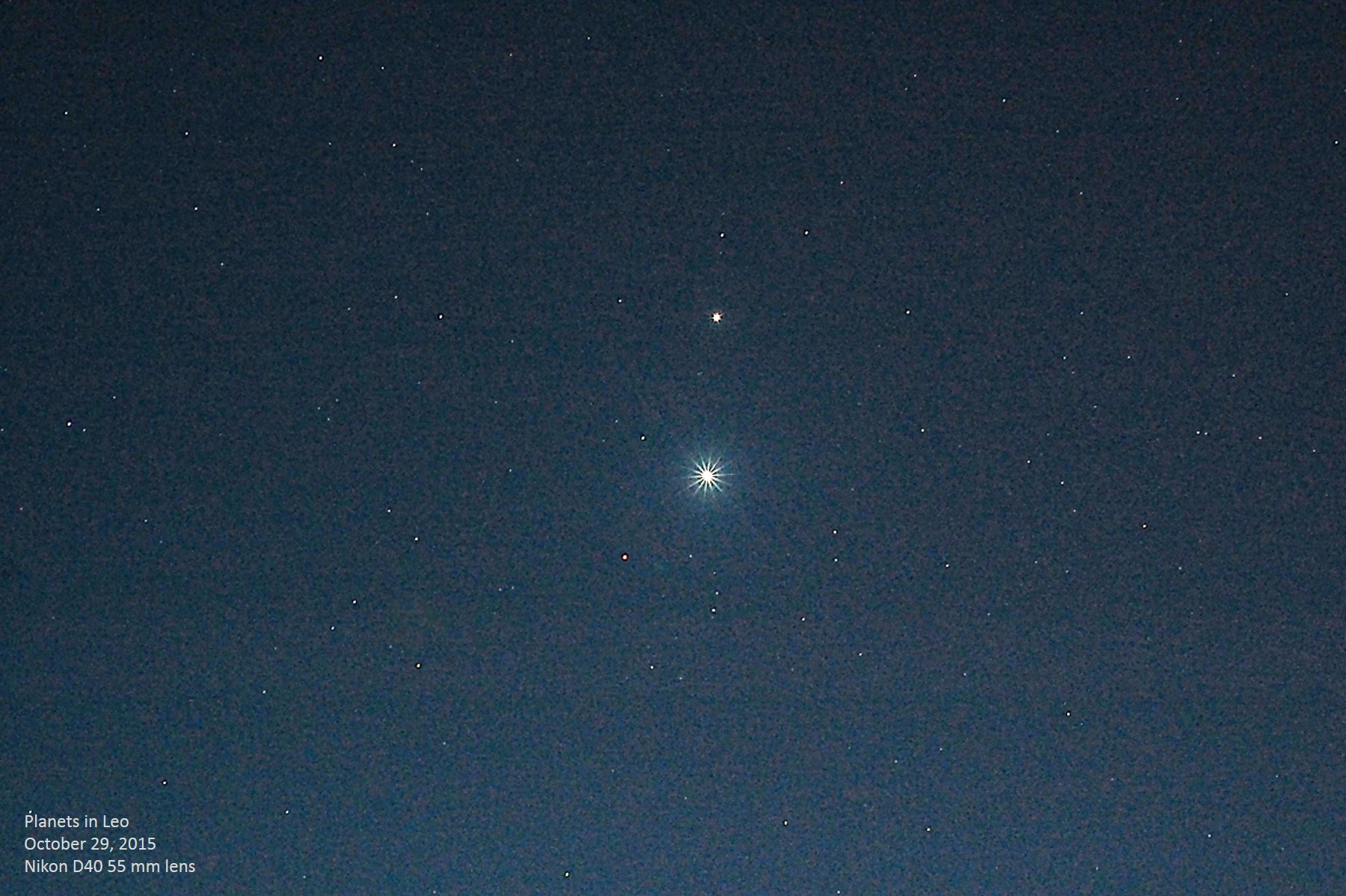 |
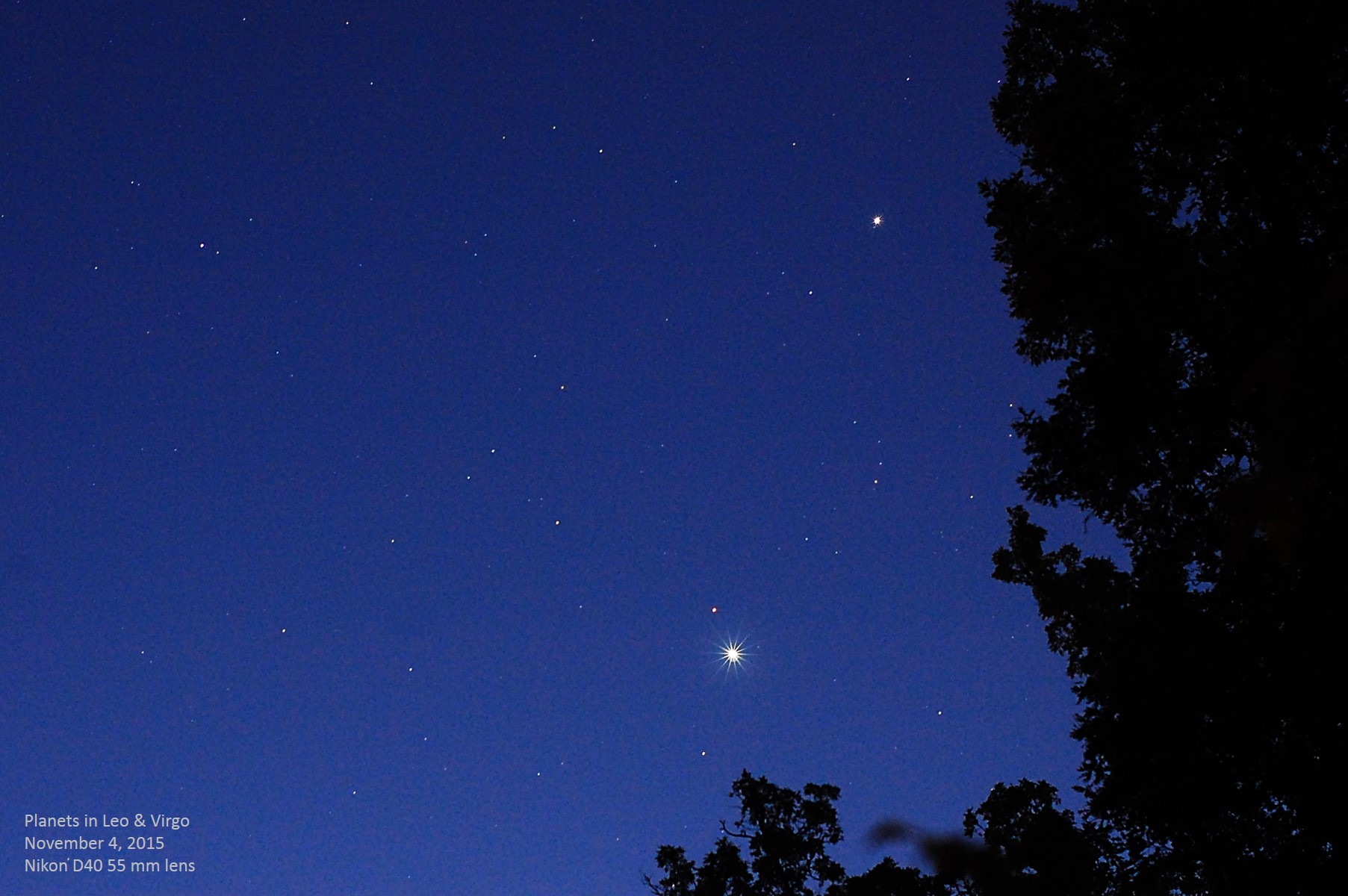 |
October / November 2015: Planet Gathering In this second series of images showing the planetary gathering, we see that faster moving Mars and Venus have left Jupiter behind up in Leo while they have moved south toward Virgo. |
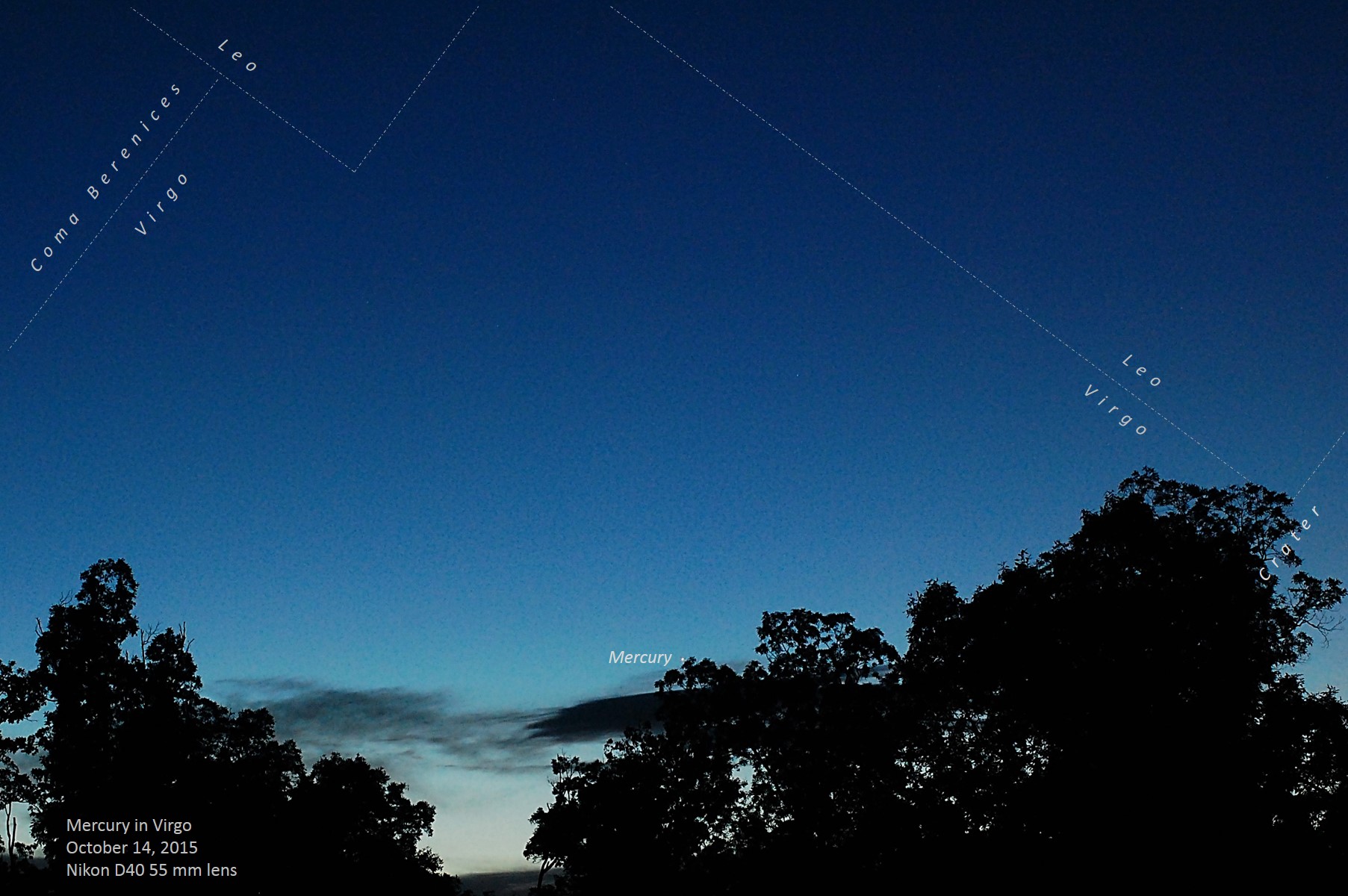 |
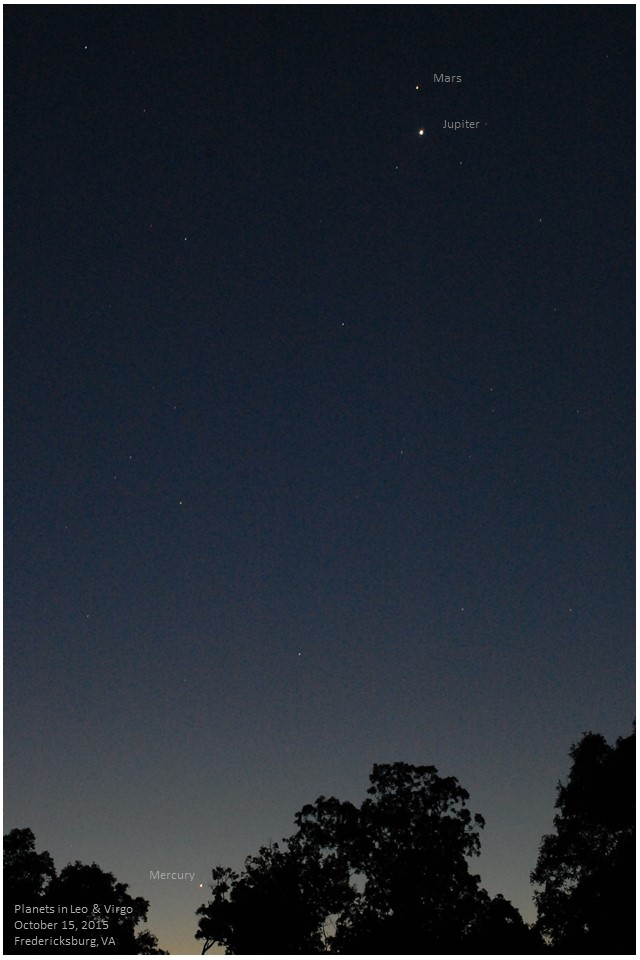 |
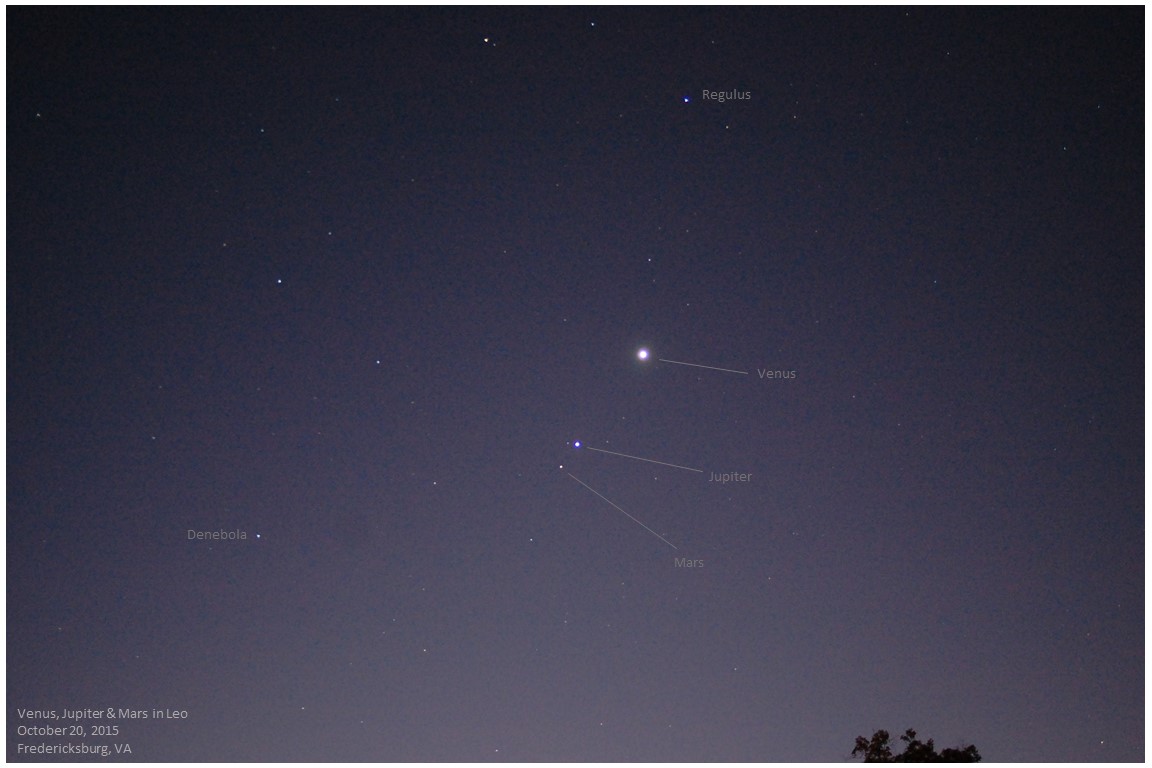 |
October 2015 In the fall of 2015, Mars, Venus, and Jupiter engaged in a trefoil dance through Leo and Virgo, which I captured in various images from our backyard in Fredericksburg, Virginia. Here, we see in the first image that Mercury was also visible at the bottom of the image, while in the second image we focus on the main three well above the horizon. |
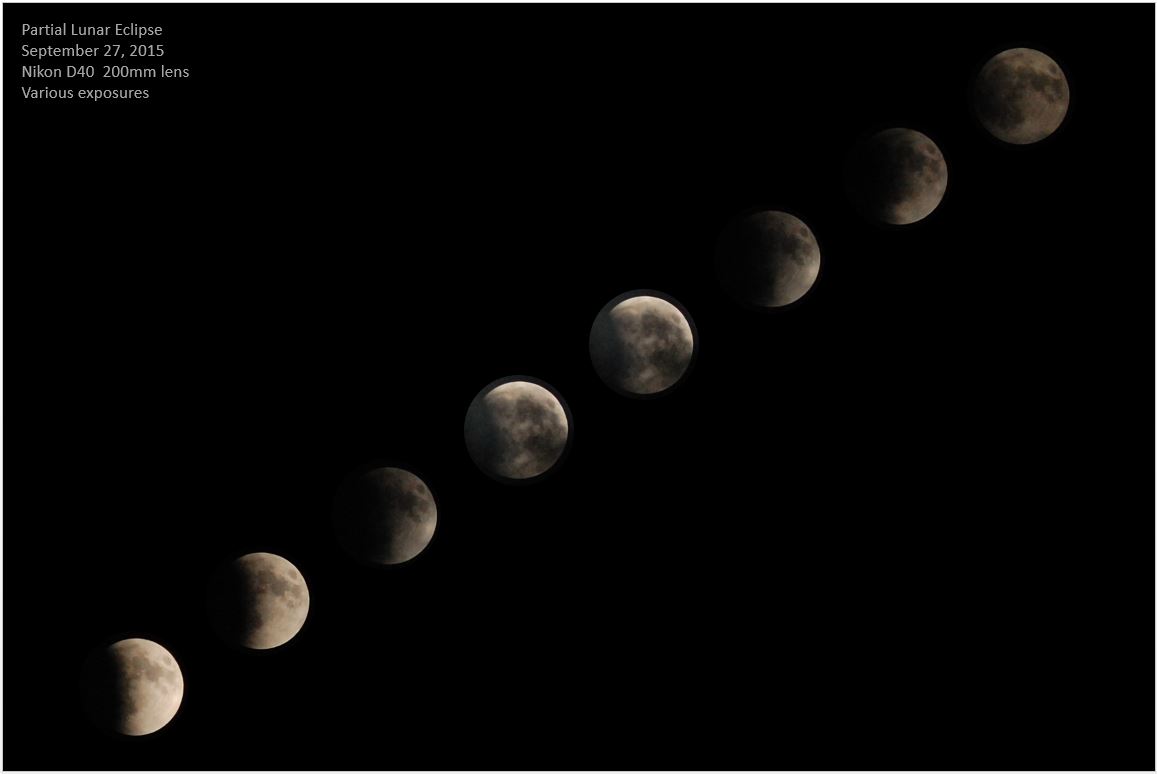 |
September 2015 We were treated to a good lunar eclipse on September 27, 2015, which I tried to capture in this series of images with a 200 mm telephoto lens. |
||
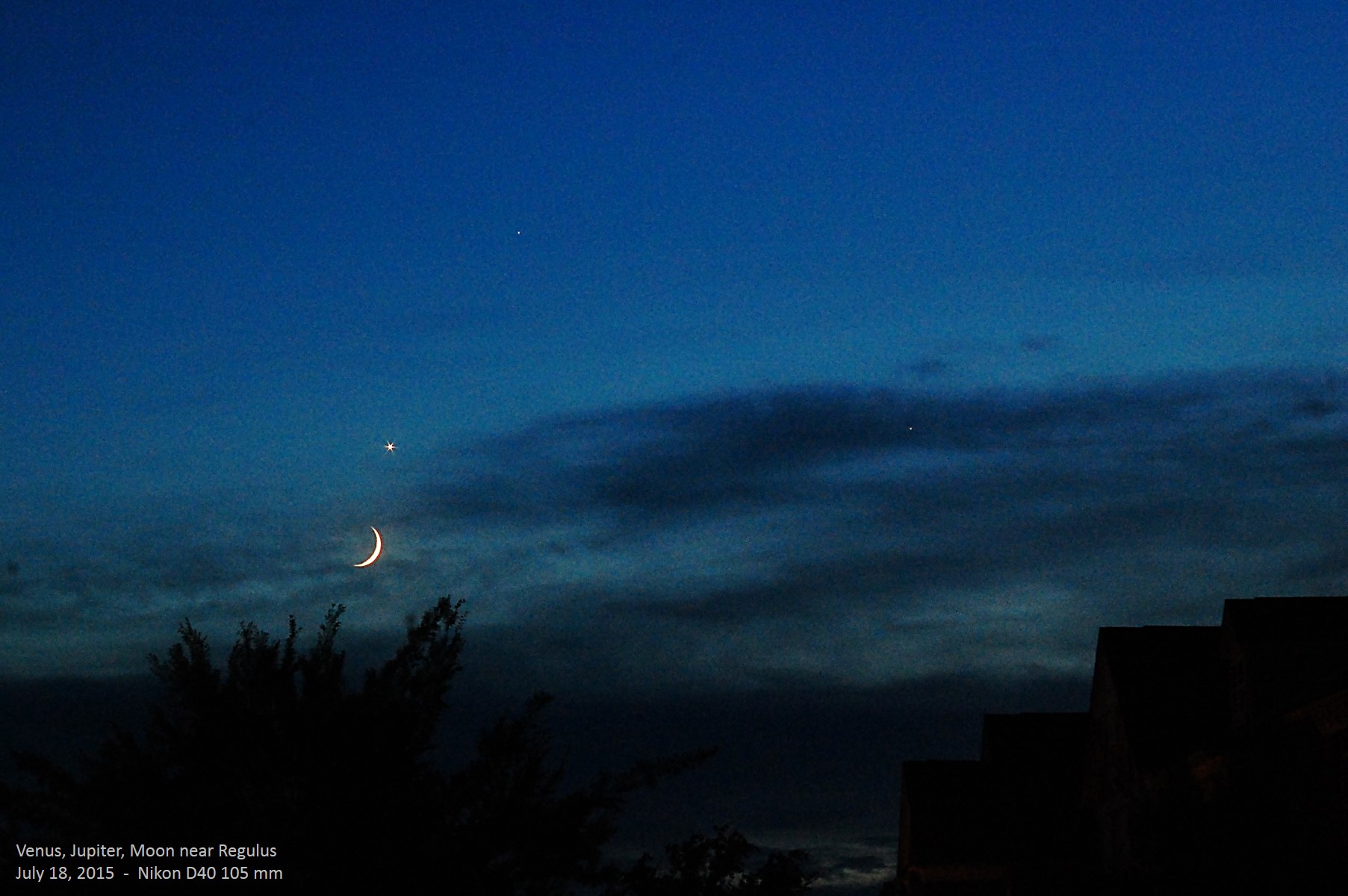 |
July 2015 (Venus/Moon/Jupiter) Clouds almost spoiled my view of the nice grouping of Venus, the Moon, and Jupiter, along with Regulus, on July 18, 2015. Jupiter can barely be seen pricking through the cloud bank on the right half of the image. Note how far south Venus is of the ecliptic, a feature of the late part of one of its "January to August" apparitions, which always ends with an inferior conjuction well south of the Sun. |
||
 |
 |
June 2015 By June, Venus had progressed into Cancer and then moved into Leo by month's end, which in this case meant it was going through a close conjunction with Jupiter. I caught them on the 29th, not the exact date of their closest approach, but one of the rare days of clear weather during this time. This particular type of conjunction between the two brightest planets occurs every 24 years, to within a few weeks; the last one, in mid-June 1991, was also accompanied by Mars, as shown in this image by Alan Dyer taken on June 17, 1991. |
|
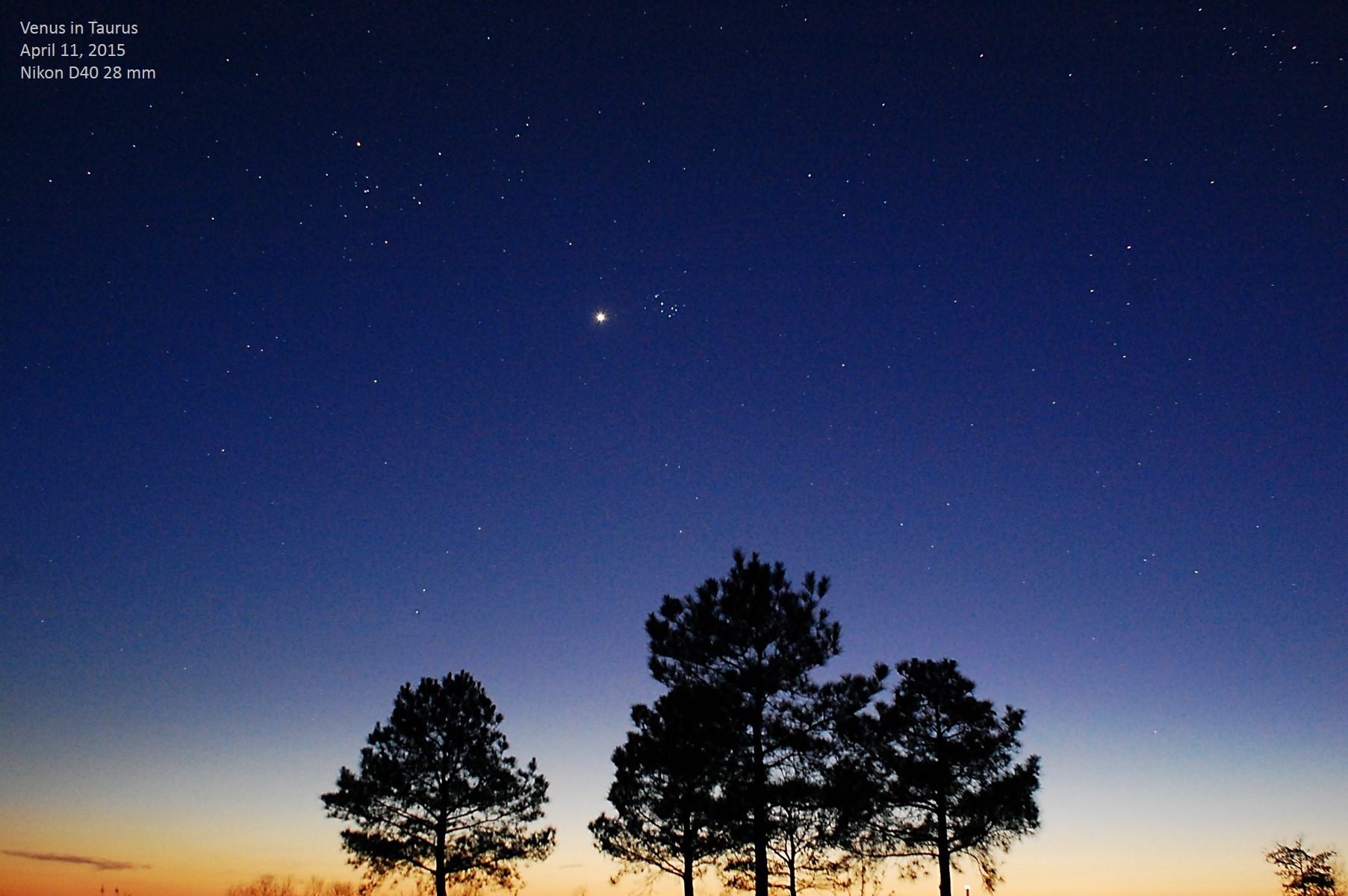 |
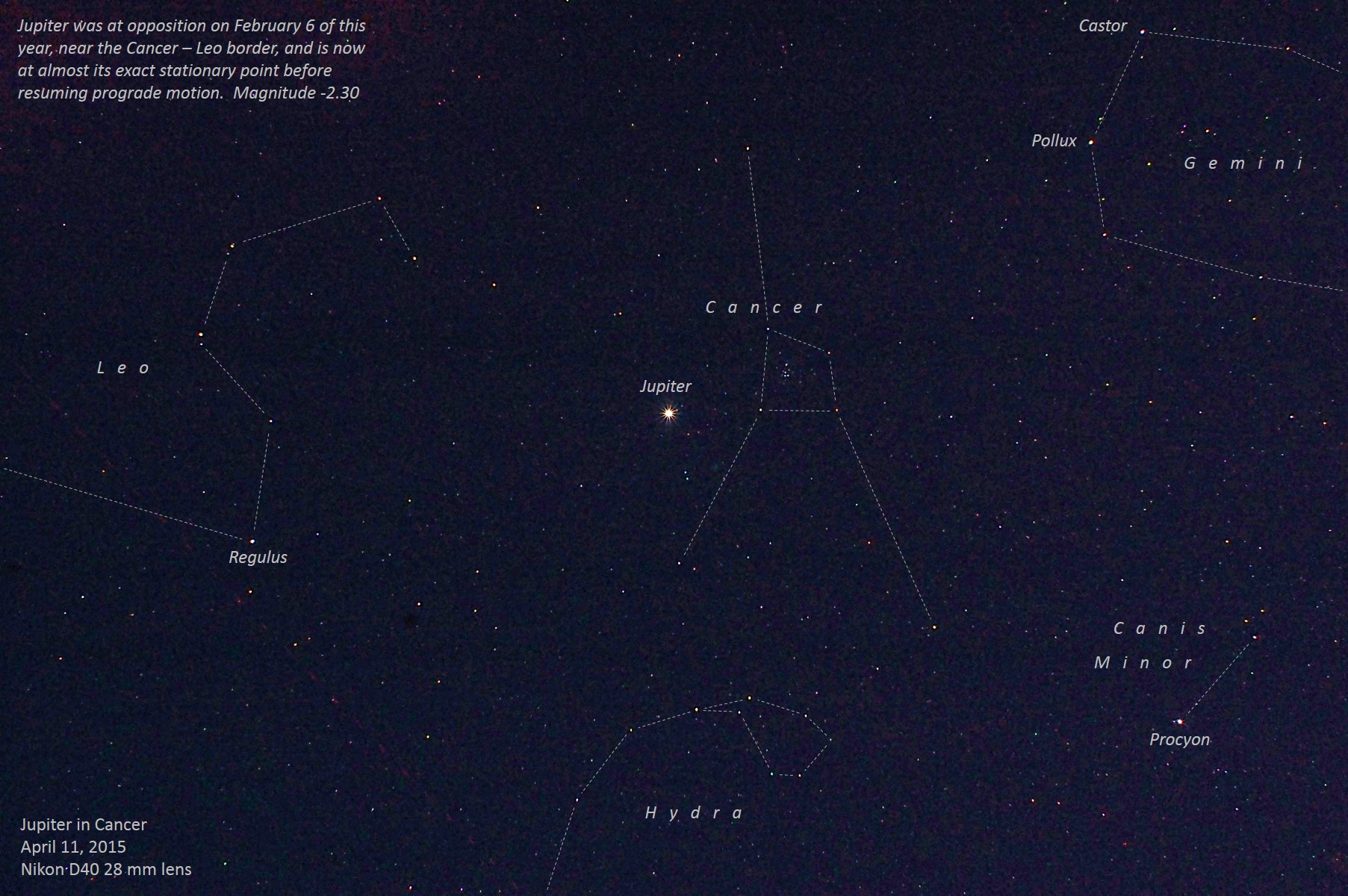 |
April 2015, Venus & Jupiter During the first part of 2015, Venus treated us to a very prominent evening apparition, which began with a low appearance in the dusk in January, quickly building to a great height above the western horizon, as evidenced here, and then as spring turns to summer, a significant decline in altitude even as the elongation remains great. This apparition is of the kind featuring a late August inferior conjunction, well south of the ecliptic. This image was taken in King George County, east of Fredericksburg. Jupiter has finished its retrograde motion and will resume prograde motion in the next day or two. |
|
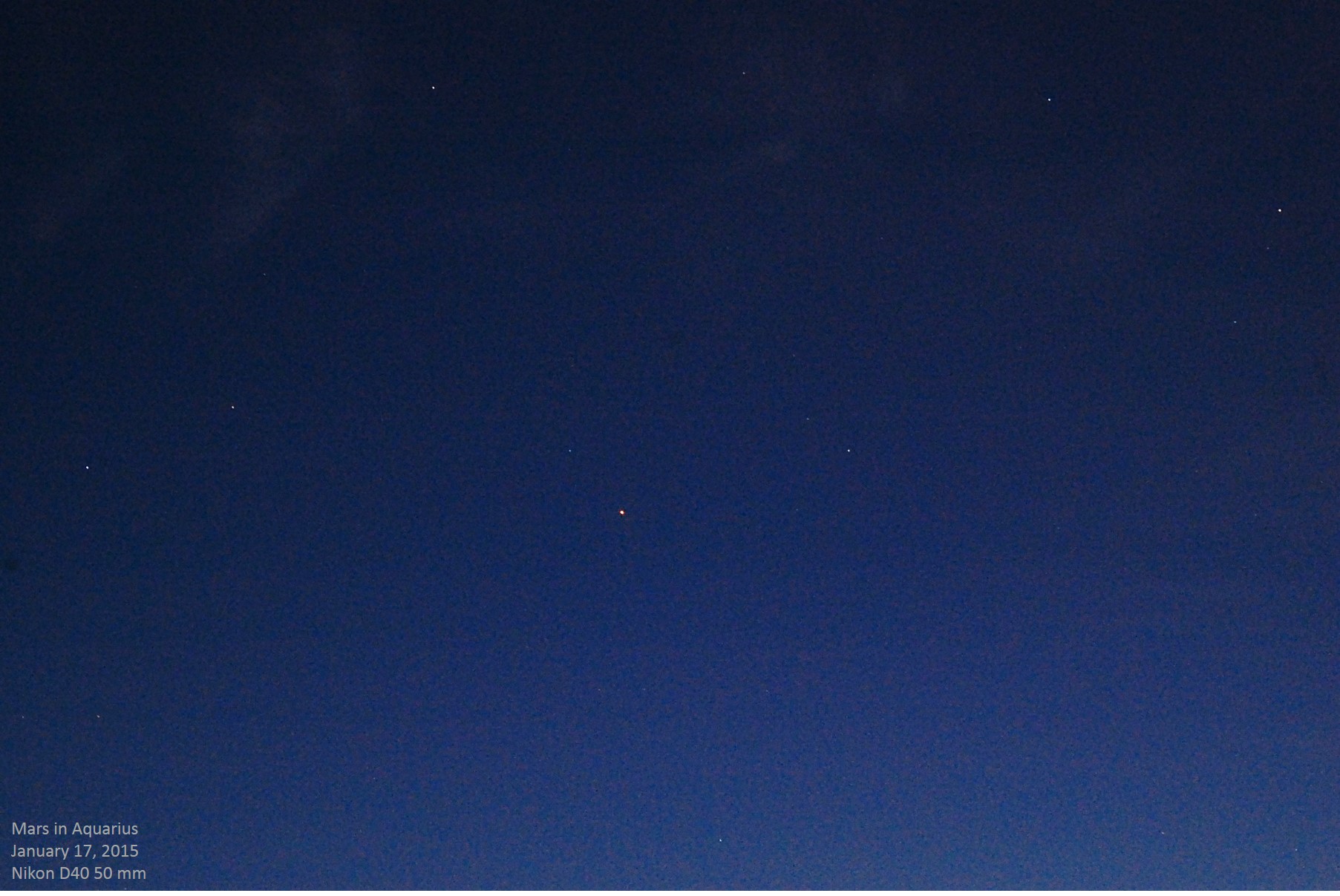 |
January 2015 Mars is still fairly bright (about the magnitude of Pollux or Fomalhaut) as it slowly sinks into the western twilight during the first few months of 2015. Here it is moving through Aquarius, about to pass Neptune which unfortunately was too faint for me to catch since this picture was made while there was still a glimmer of twilight in the sky. |
||
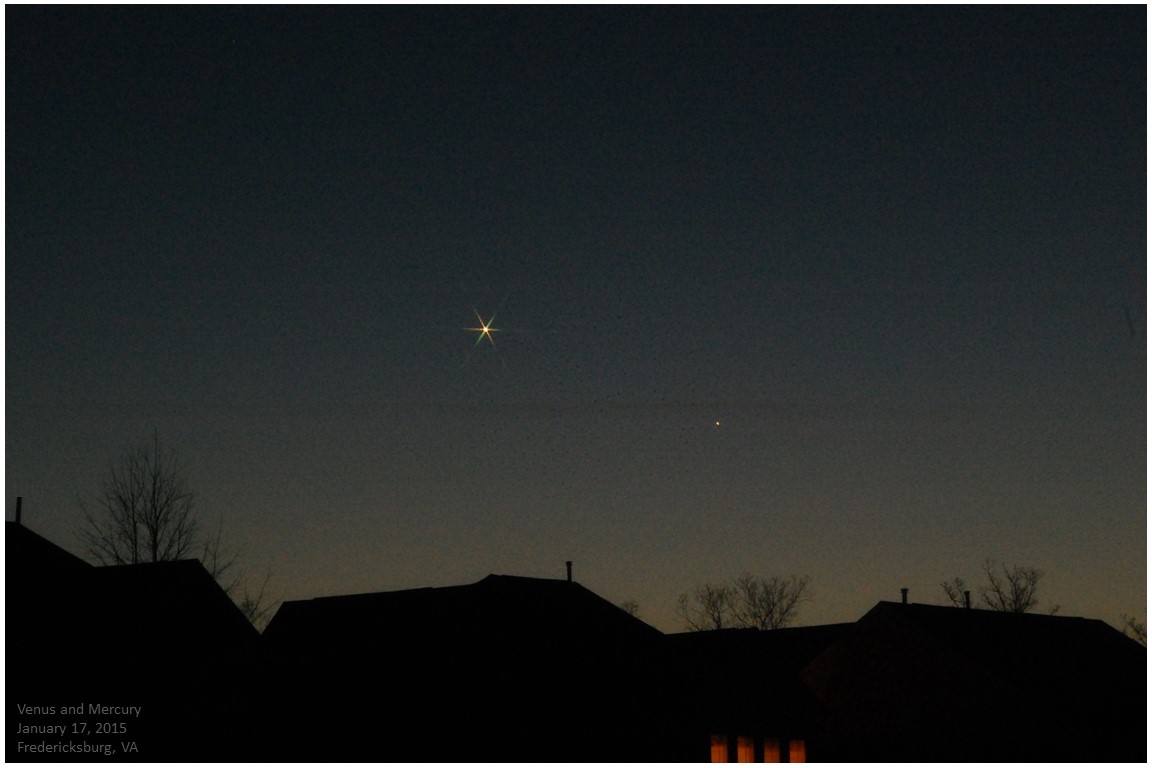 |
January 2015 Hampered by light pollution though my position was, I was still able to record the not-very close pairing of Venus and Mercury on January 17, 2015, over the houses in my neighborhood in Fredericksburg, Virginia. |
||
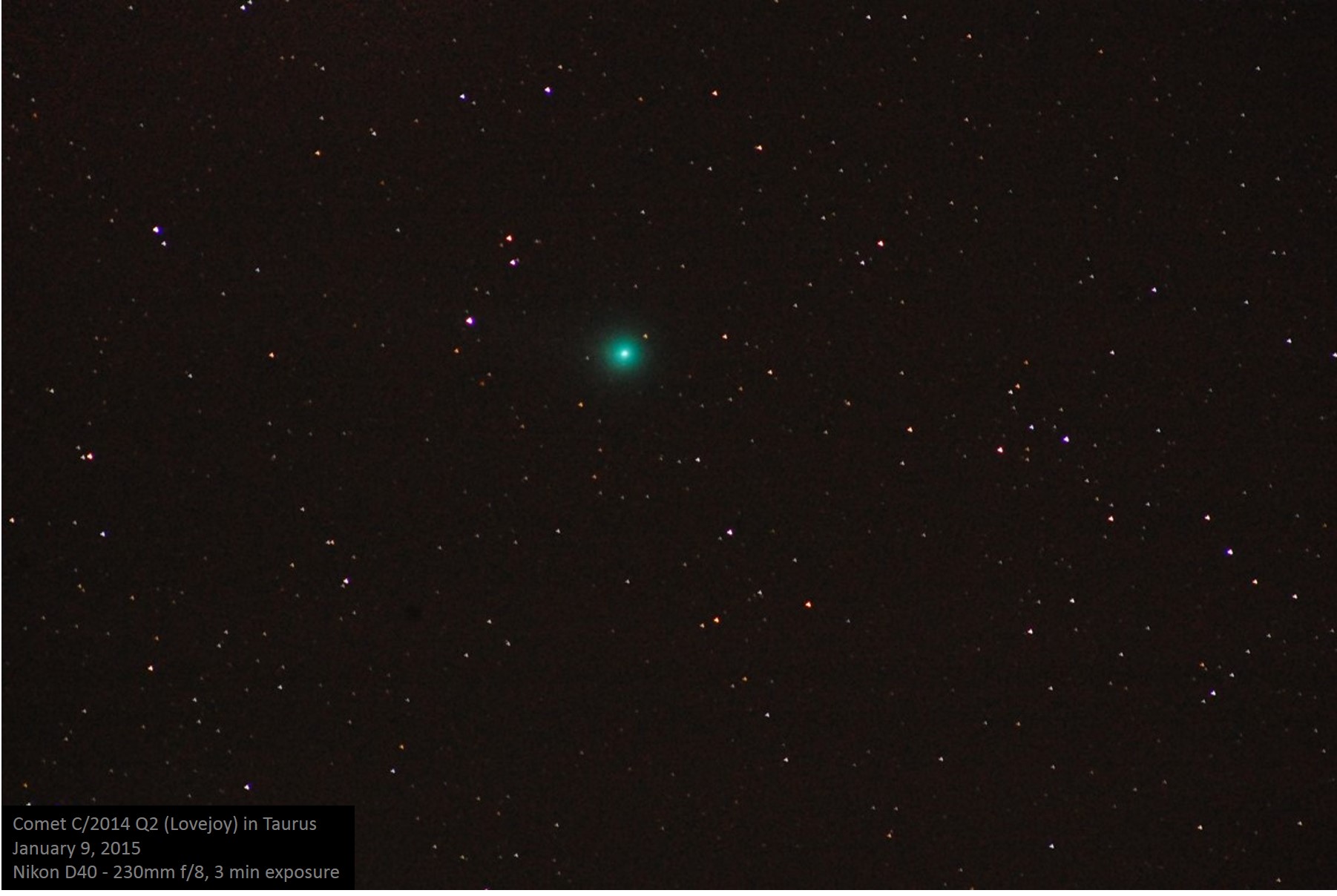 |
January 2015 In January 2015, Comet Lovejoy passed through the inner solar system, from our viewpoint moving north from Eridanus into western Taurus. My image shows the typical view of a small comet that doesn't become bright enough to be easily visible with unaided vision and doesn't develop a noticeable tail ~ what we normally see is just a fuzzy green roundish object. |
||
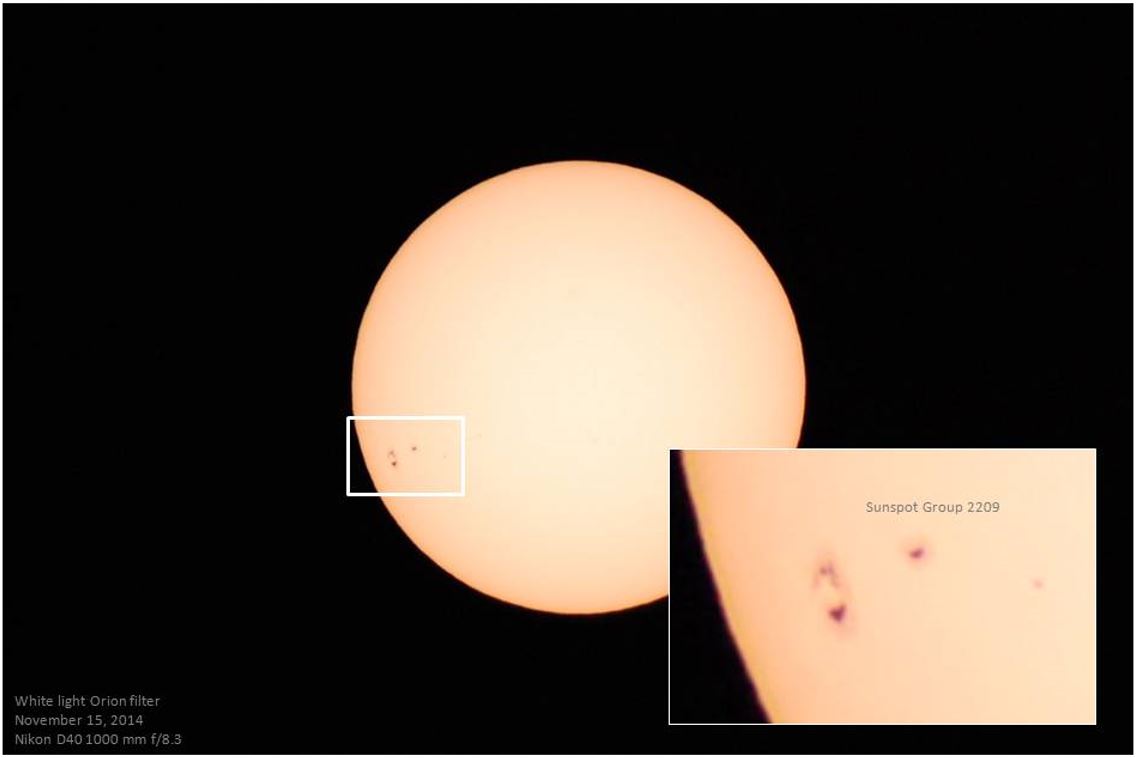 |
November 2014 I tried another shot of the sunspot activity on November 15, 2014, with this white light view showing group 2209. For this view I used my 1,000 mm f/8.3 achromat. |
||
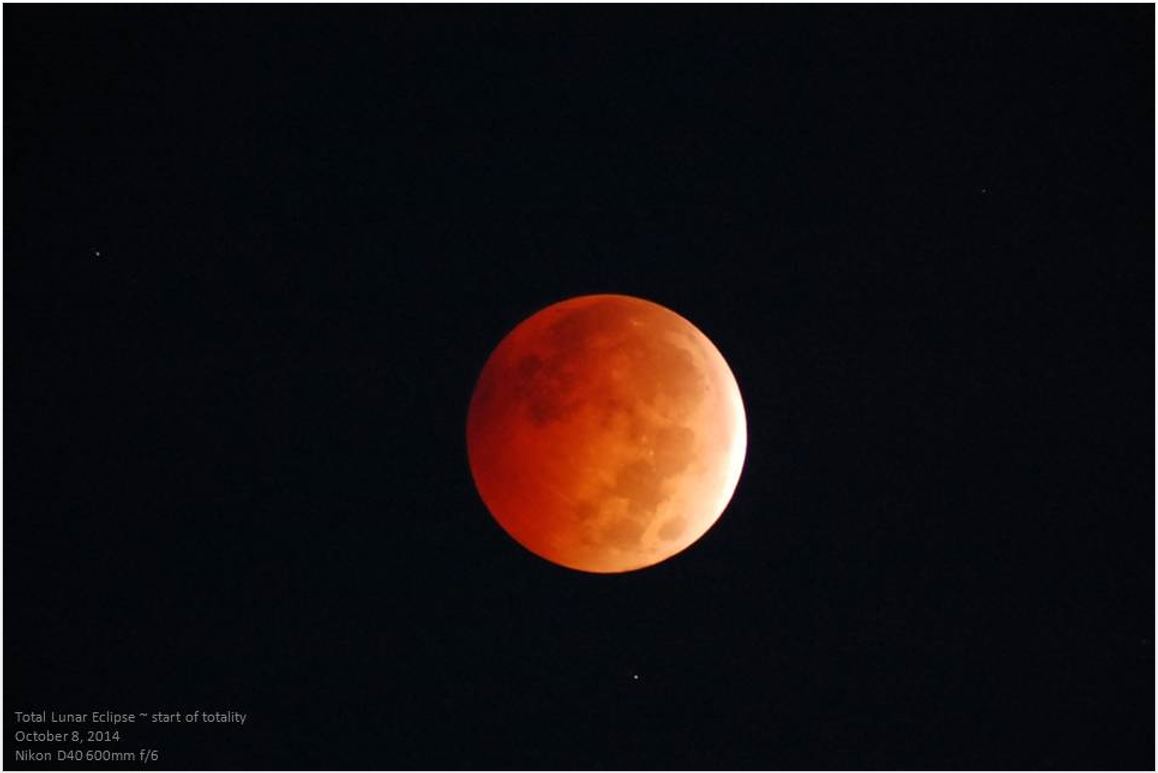 |
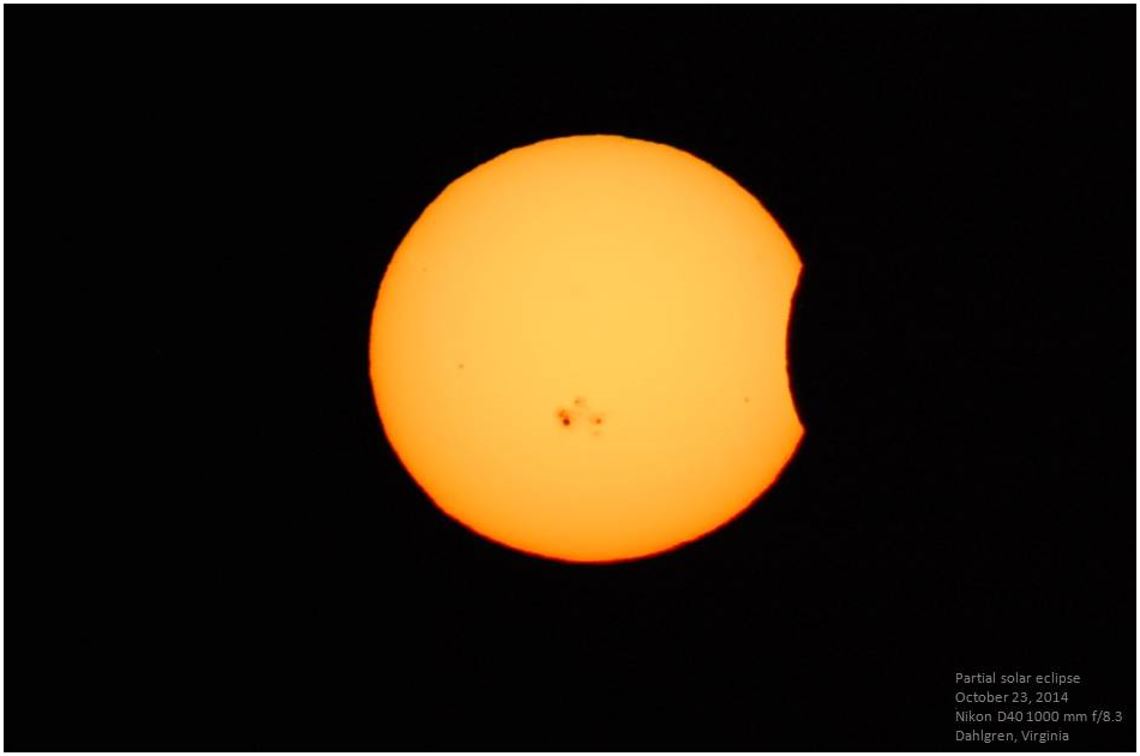 |
October 2014 On October 8, 2014, we were treated to a nice total lunar eclipse, with this image showing the very start of totality, followed two weeks later by a partial solar eclipse, which in my view shows a very small bite out of the Sun with a great sunspot group visible. |
|
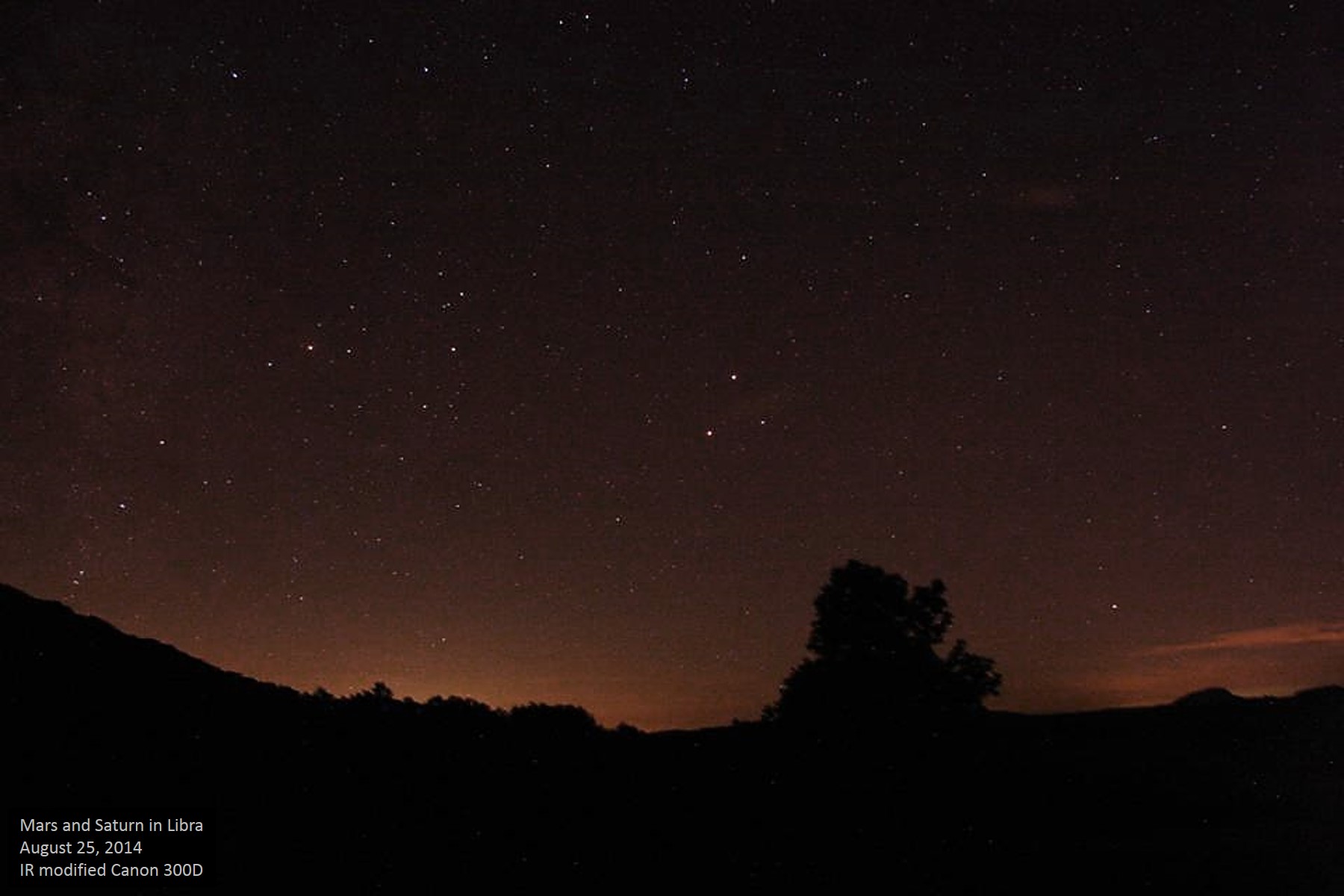 |
August 2014 Christa and I took a nice trip along the Blue Ridge Parkway and stopped at one of the overlooks in Rocky Knob Recreation Area, called the Saddle, and in the evening I tried out my modified Canon Digital Rebel for the first time; most of my pictures were of the Milky Way but I took a break from that to snag the conjunction of Mars and Saturn near α Librae. |
||
 |
August 2014 Almost exactly 24 years after I missed the super-close conjunction of Venus and Jupiter in 1990 while living in Fayetteville, NC, I managed to get an image of the 2014 version of it. Maybe in 2038 I will be in a position to see the conjunction on the date of closest separation. |
||
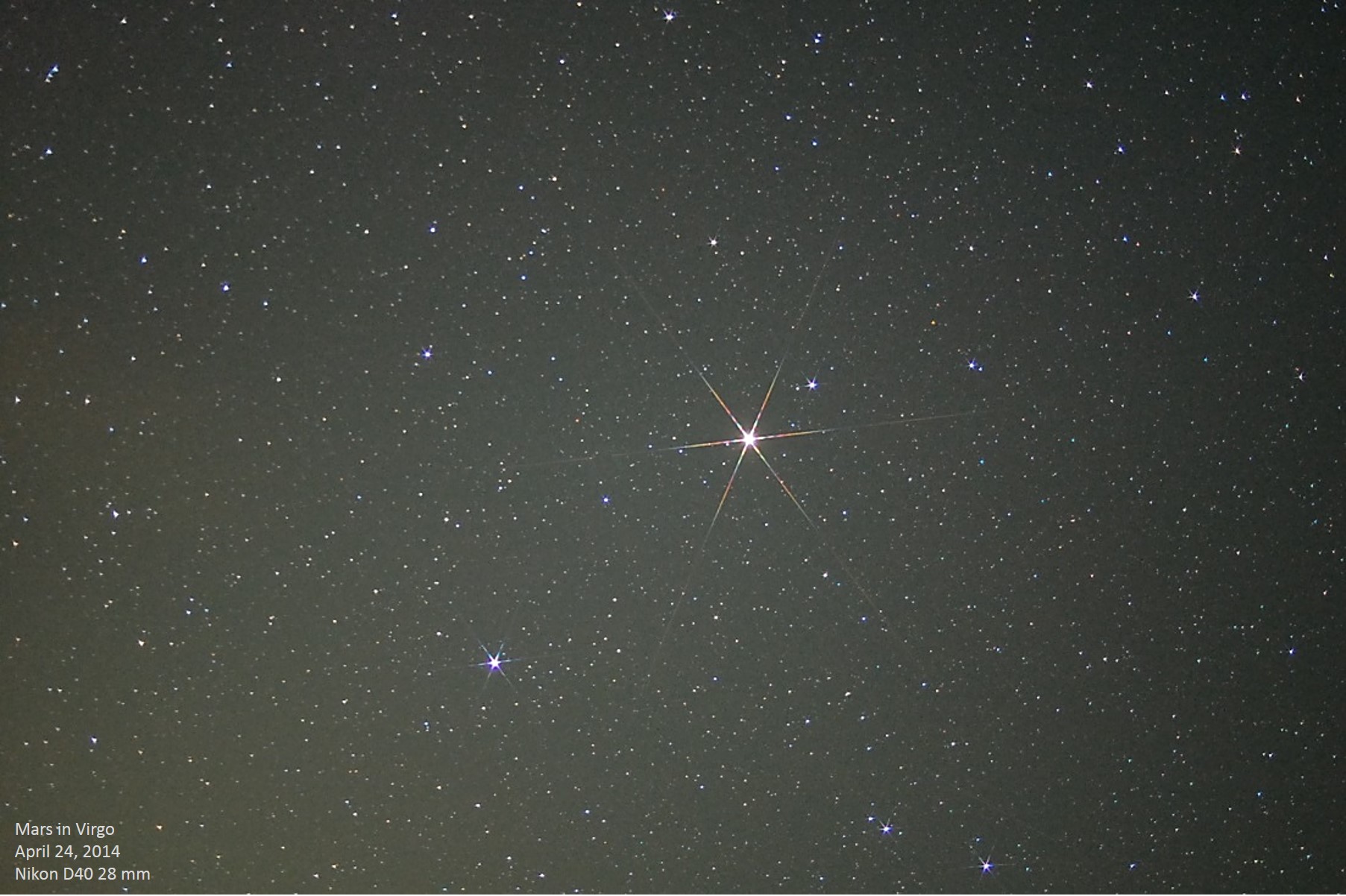 |
April 2014 In April 2014, we drove to Dallas, Texas to visit relatives and one afternoon I drove out to a dark site west of the metro area for some astronomy ~ Mars was about two weeks past opposition in Virgo, so I got a decent picture of its position northwest of Spica. |
||
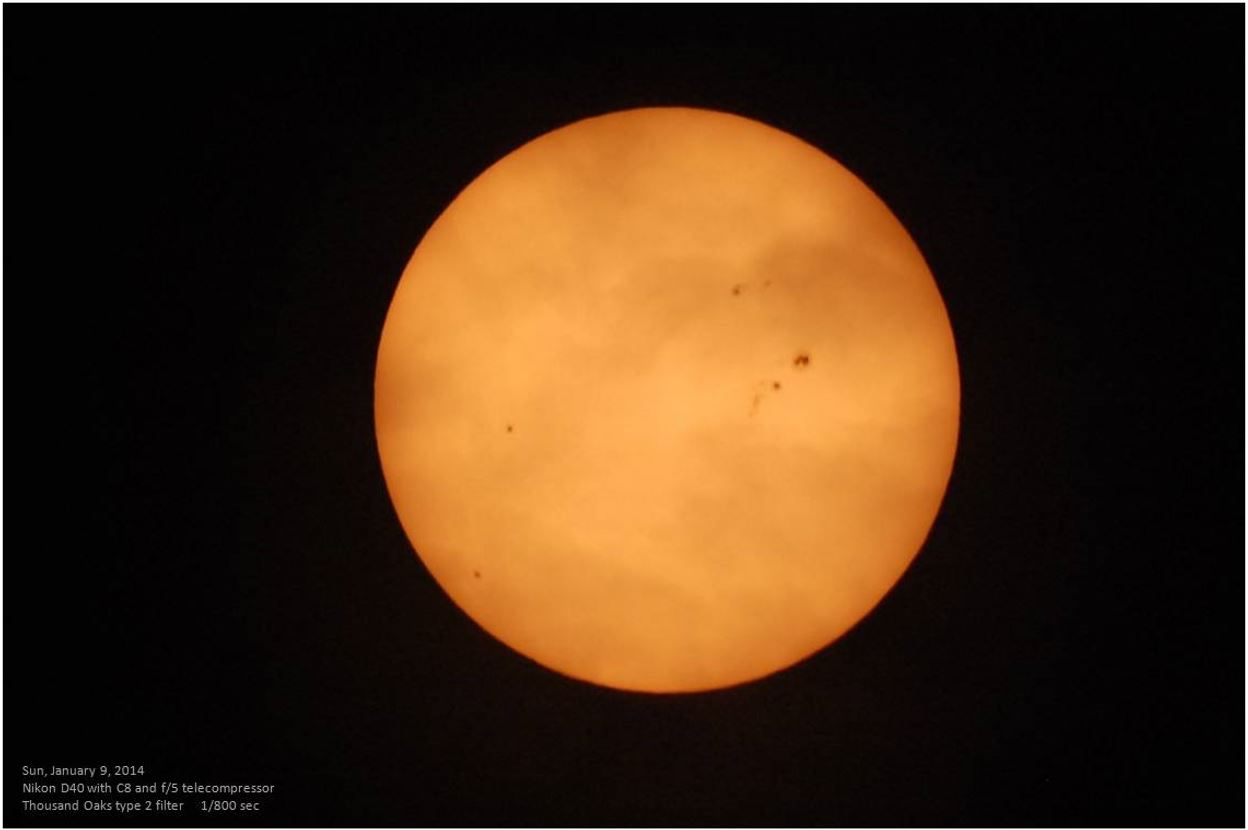 |
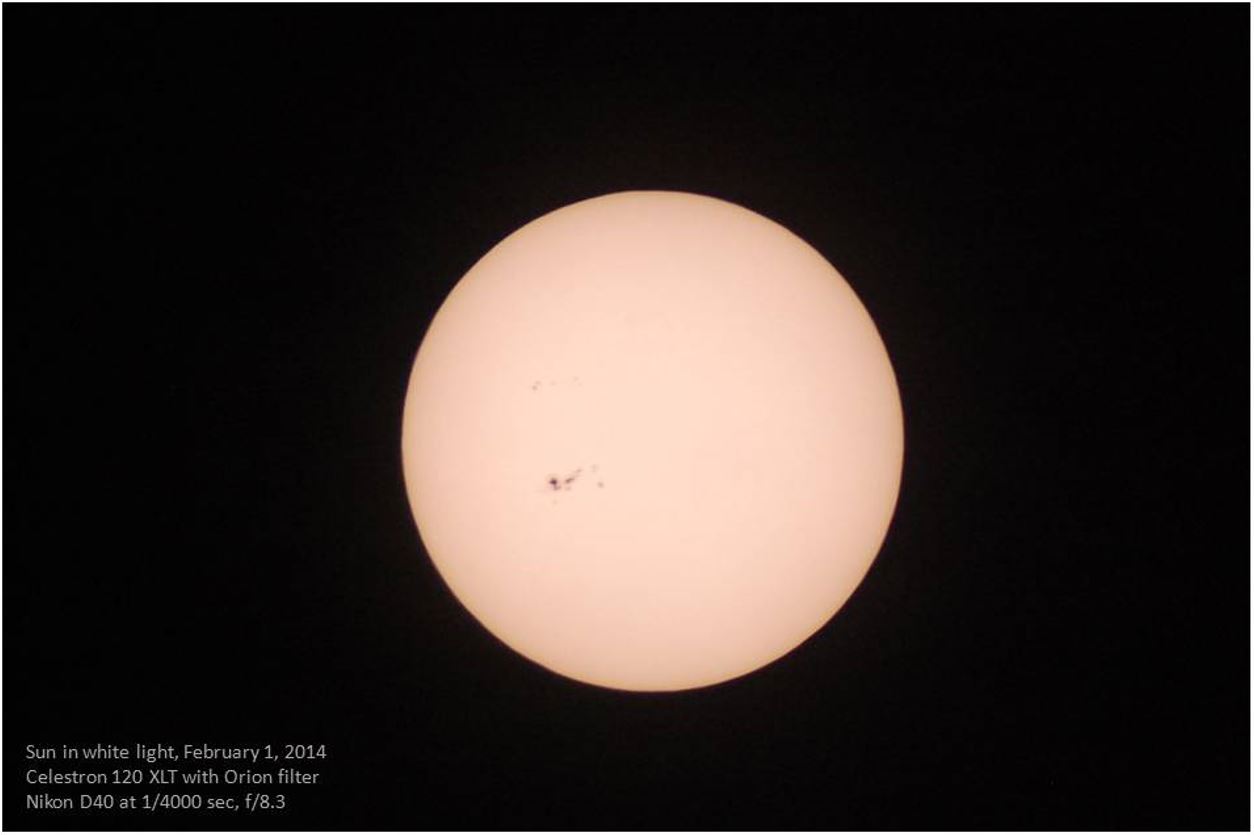 |
January / February 2014 The year 2014 was one of near maximum solar activity, so I decided to try capturing the sunspots using a variety of telescopes and filters. Here I am using a Celestron 8 SCT and an f/5 telescompressor, so the effective focal length is 1,000 mm, along with a Thousand Oaks type 2 solar filter for the first picture, and a 120mm f/8.3 refractor with a 1,000 mm focal length for the second. |
|
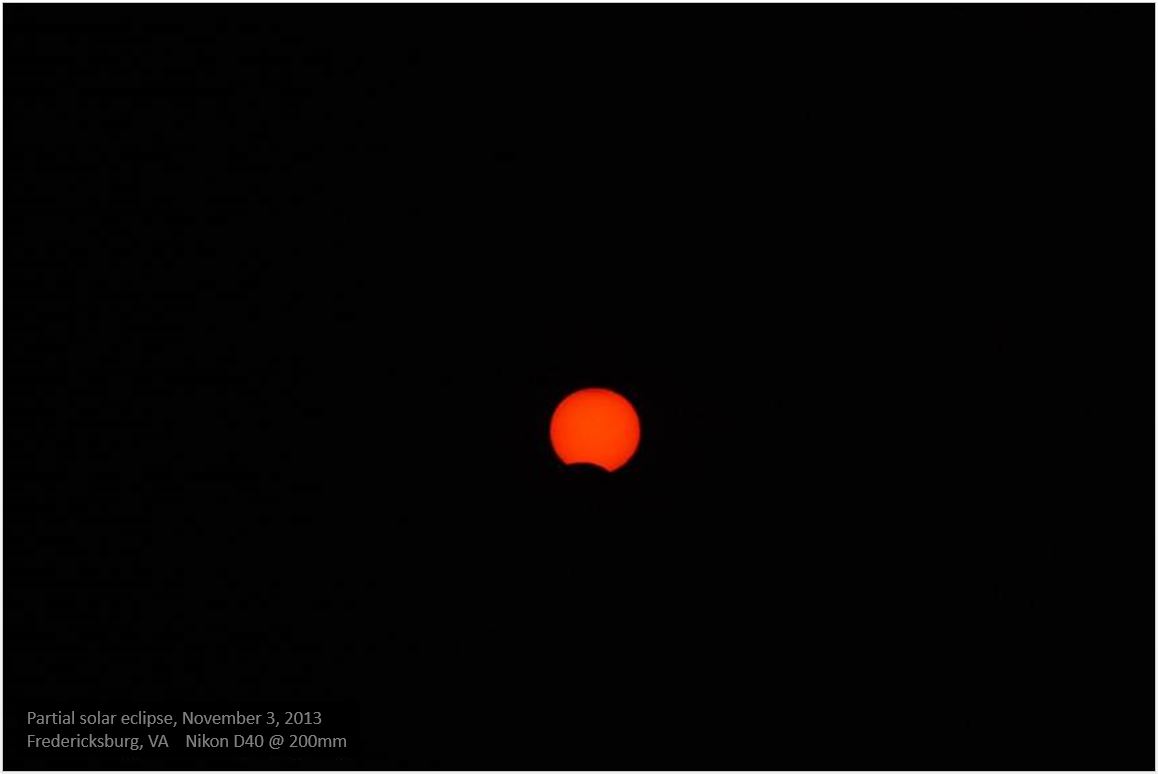 |
November 2013 In early November 2013, we enjoyed a very slight partial solar eclipse in the morning, here visible from a wide open field east of Fredericksburg. For this shot, I used a 300 mm telephoto lens. |
||
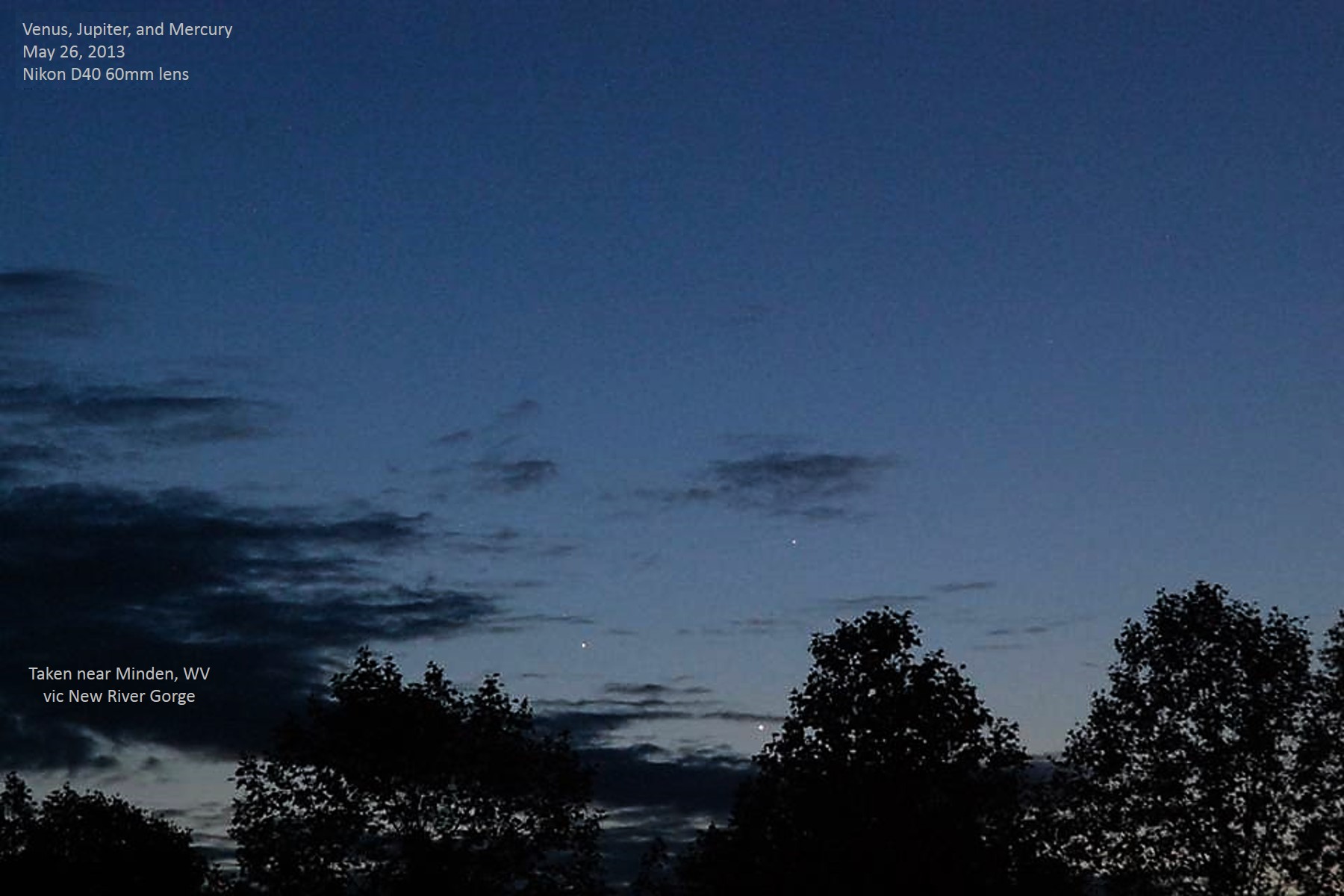 |
May 2013 (Three Planets) Venus, Jupiter and Mercury gathered for a three-body conjunction in the early evening sky of late May. This mirrors the conjunction between Venus and Jupiter (three 8-year Venus cycles and two 12-year Jupiter cycles) on May 22, 1989. I observed that one from Biloxi, Mississippi as I was about to leave there to report to Fort Bragg. |
||
 |
March 2013 In early 2013, the Comet Panstarrs made a nice appearance in the evening sky, here visible over our subdivision in Fredericksburg. Even though it was relatively small and dim, it did display a noticeable tail. |
||
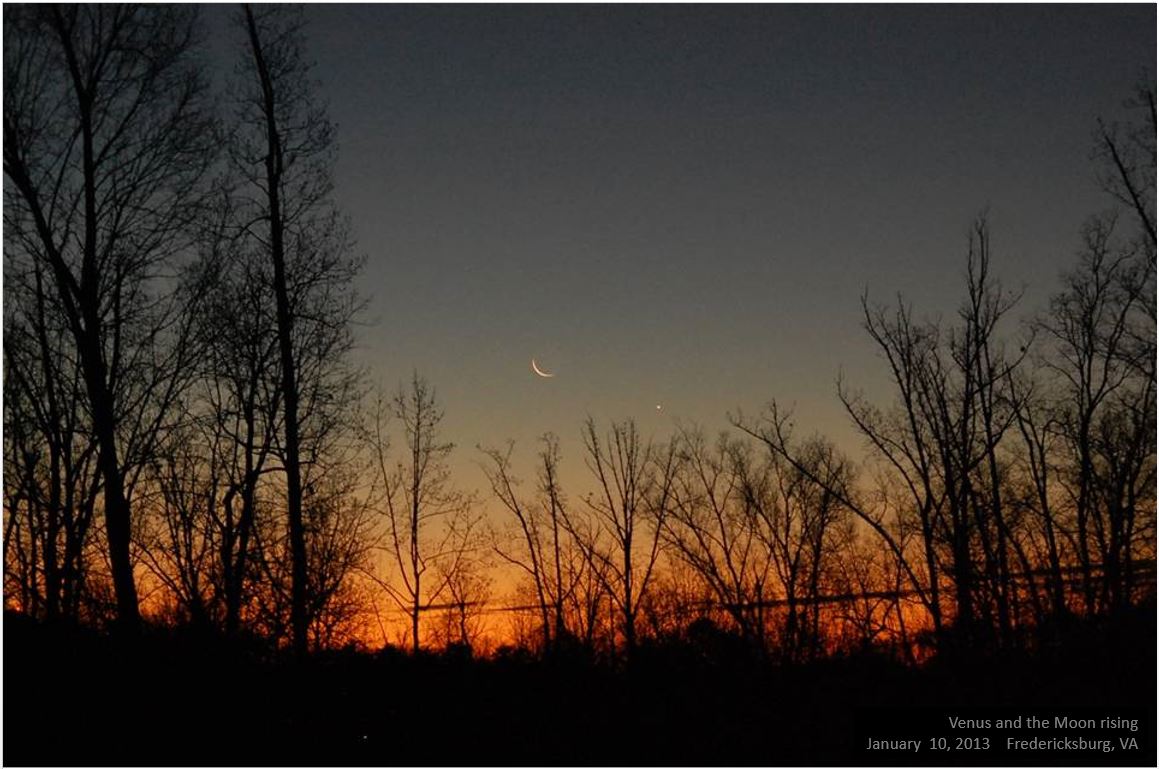 |
January 2013 On January 10, 2013, Venus and the crescent Moon gathered in the dawn sky to offer a nice view from Fredericksburg, Virginia. |
||
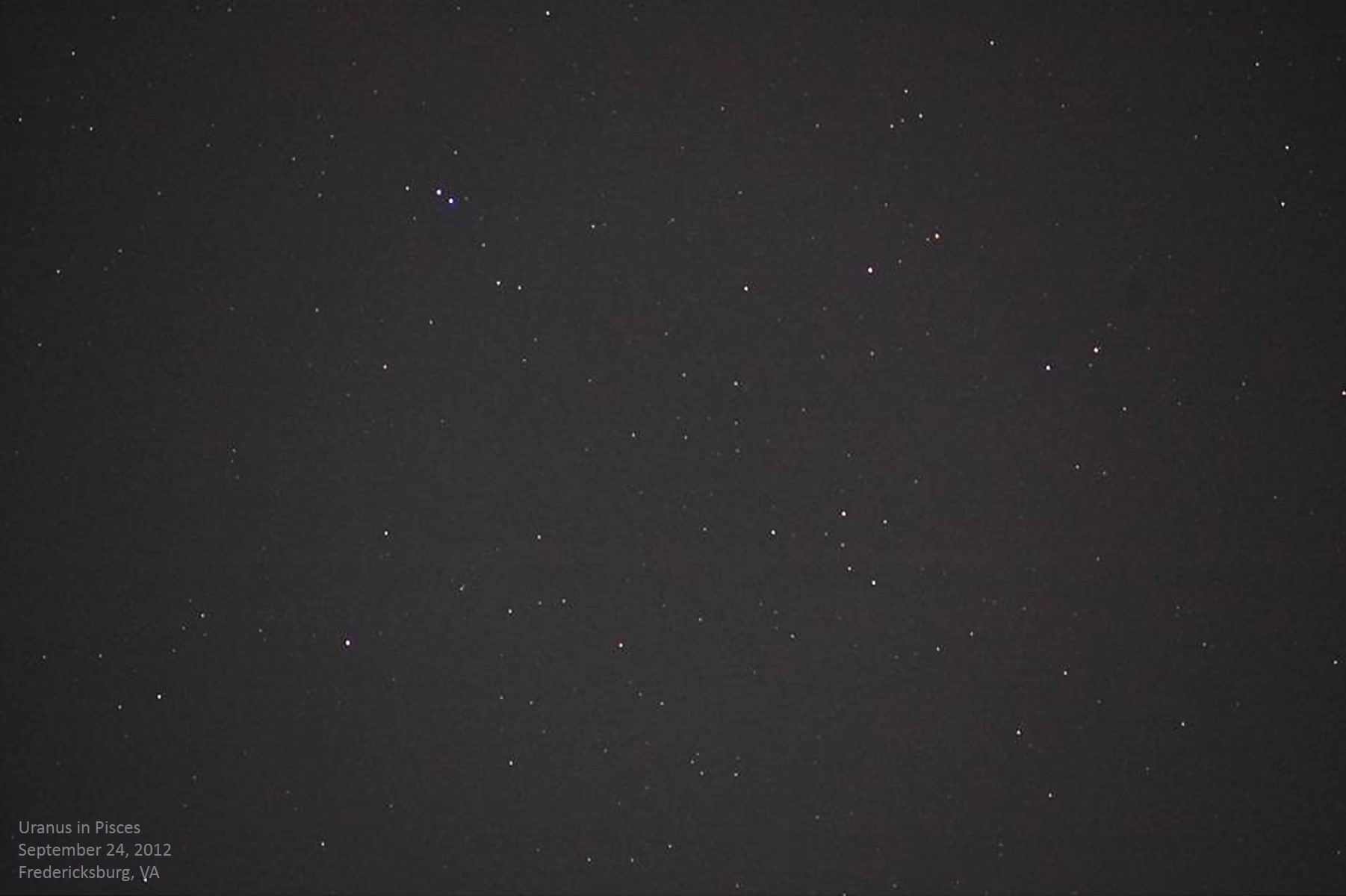 |
September 2012 Uranus is moving through the little rectangular protrusion of Pisces into Cetus, and on this evening can be seen very close to the similarly bright star 44 Piscium. |
||
 |
July 2012 Just past the transit of Venus and the superior conjunction of Jupiter before that, we now have an appulse of Venus and Jupiter (they come close to one another but no conjunction occurs). Here they are positioned in the morning sky in Taurus. |
||
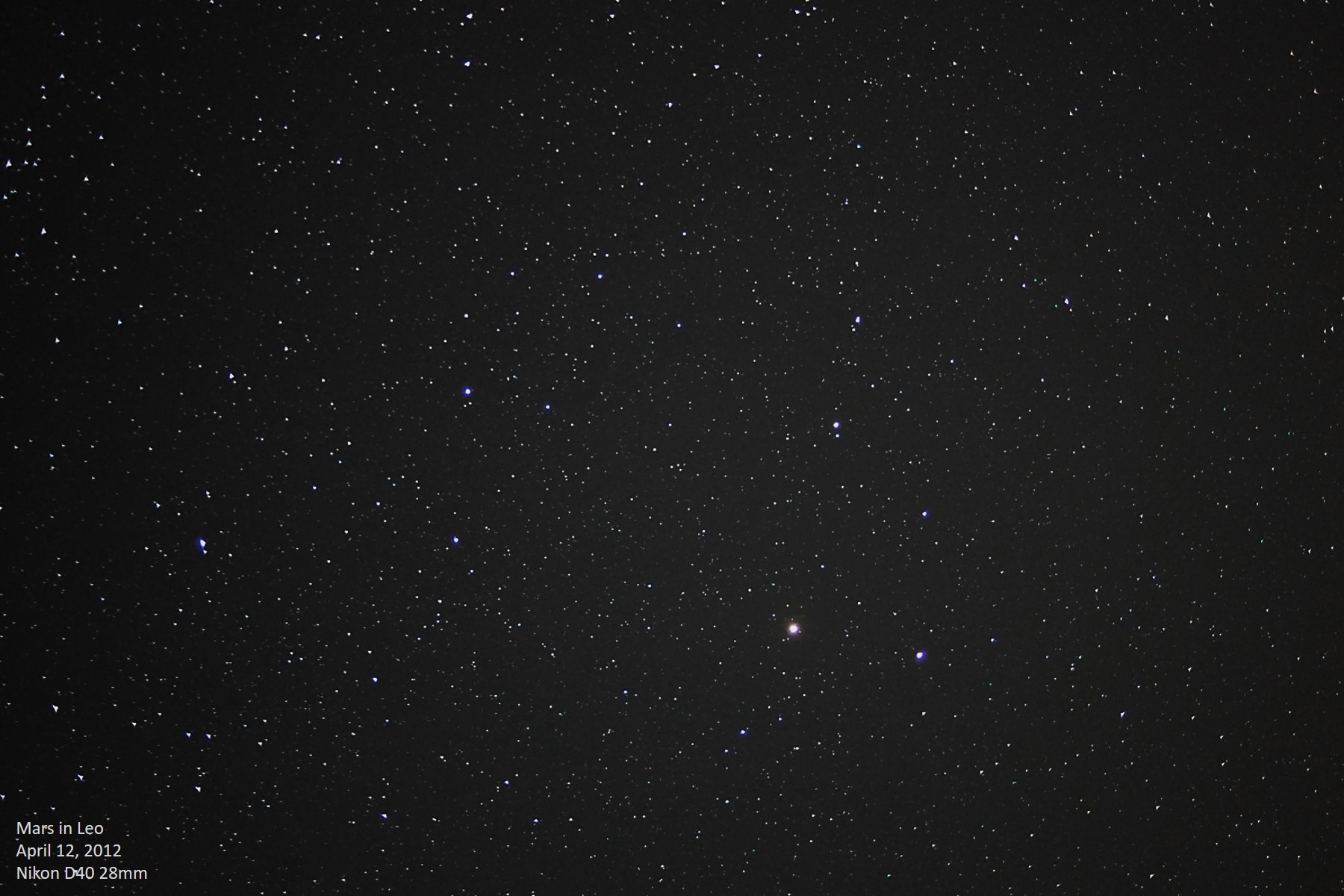 |
April 2012 Mars spent the early months of 2012 executing its opposition-centered retrograde loop in Leo. Here we caught Mars right at the end of its loop, closest to Regulus, about to resume prograde motion. |
||
 |
April 2012 Another in our series of images showcasing Venus' brilliant evening apparition in the first half of 2012, leading up to its transit of the Sun in June. Here, Venus has just passed the Pleides, much like it did during the similar apparition of 2020. |
||
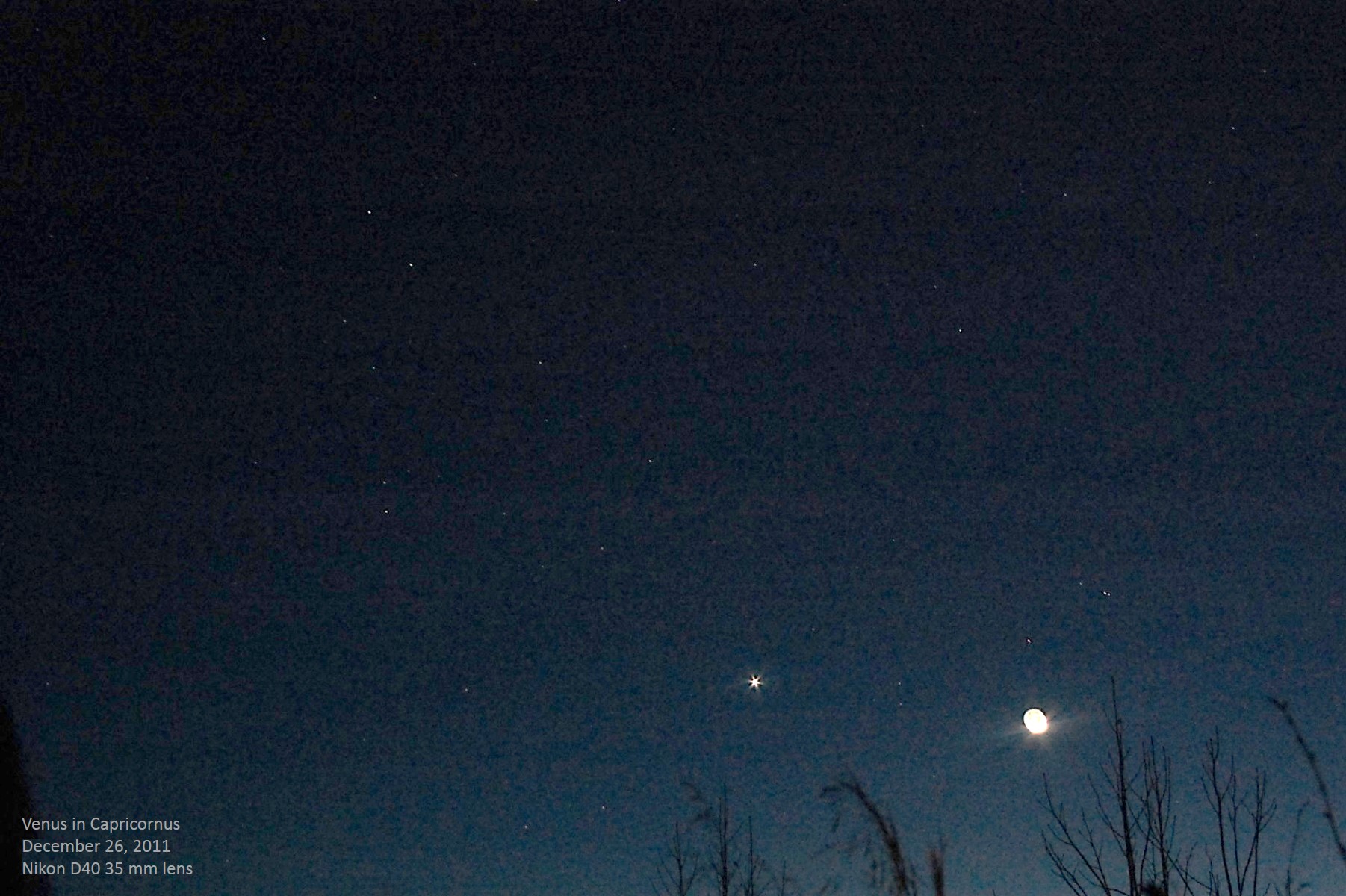 |
December 2011 Venus and the crescent Moon gathered in the evening sky in Capricornus on the second day of Christmas. |
||
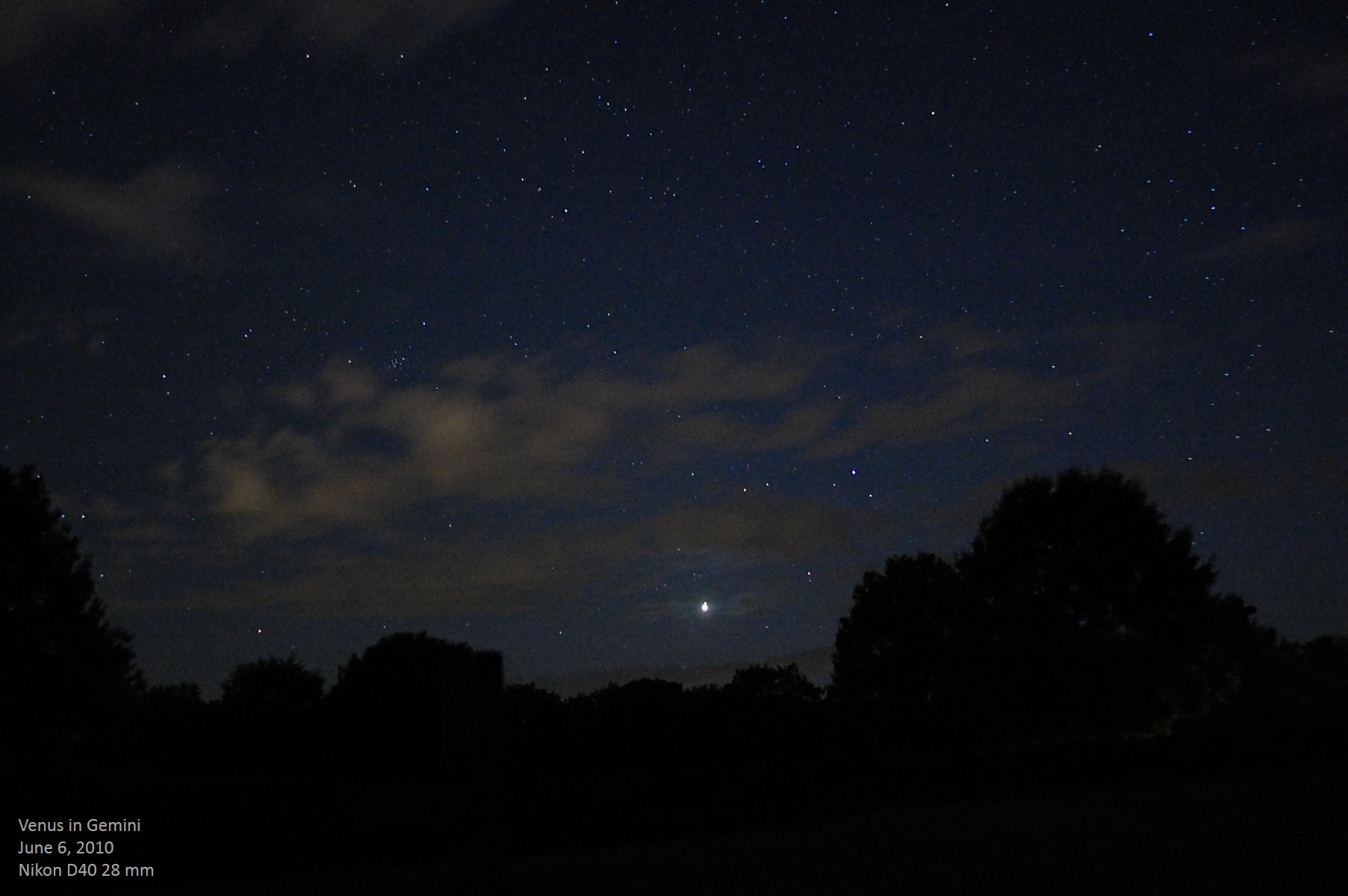 |
June 2010 On a partly cloudy evening, I captured Venus making an isoceles triangle with Castor and Pollux, along with quite a few of the fainter stars among the late spring constellations setting in the west now. |
||
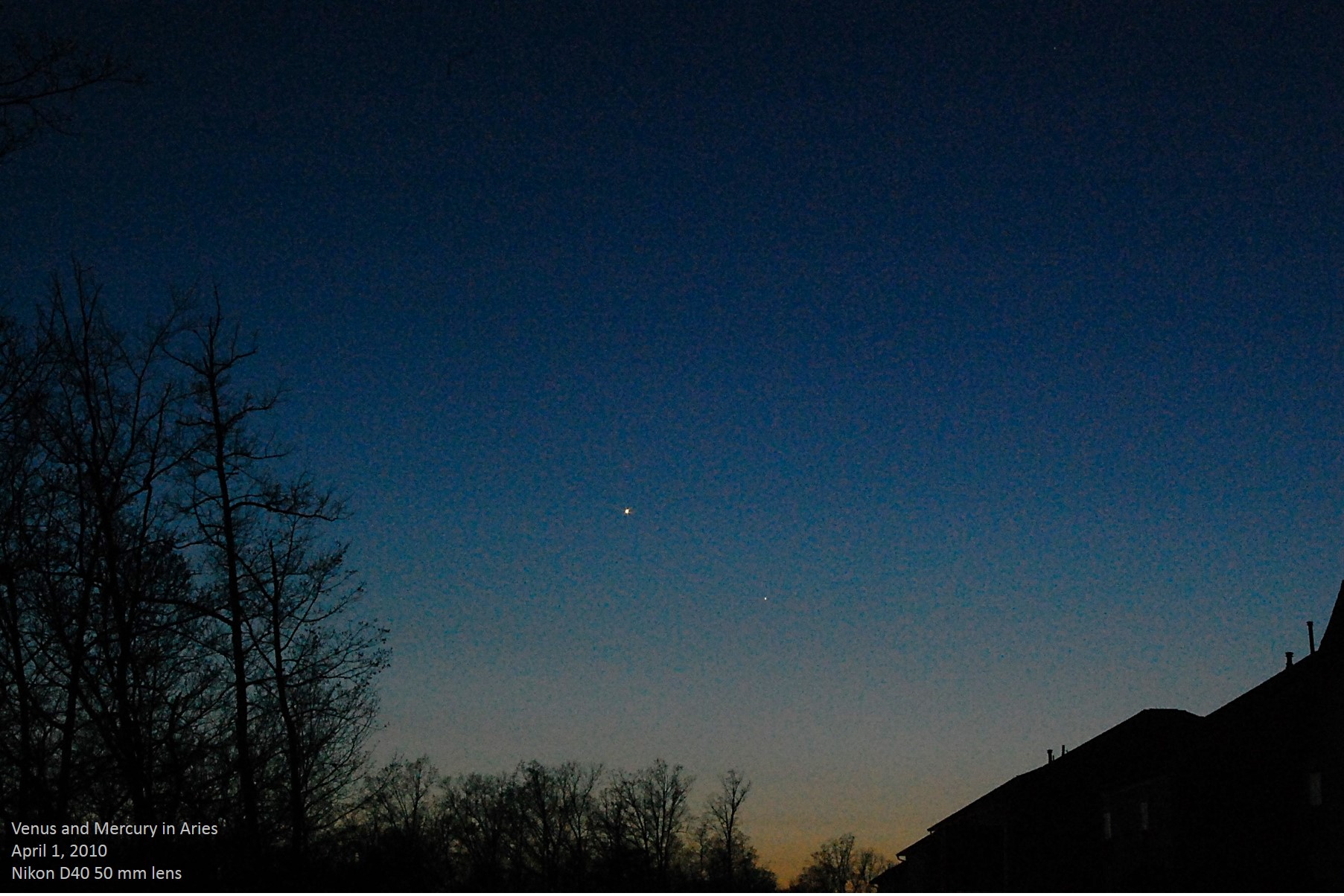 |
April 2010 Nice conjunction of Venus and Mercury in early April of 2010, taken from our neighborhood in Fredericksburg, Virginia. |
||
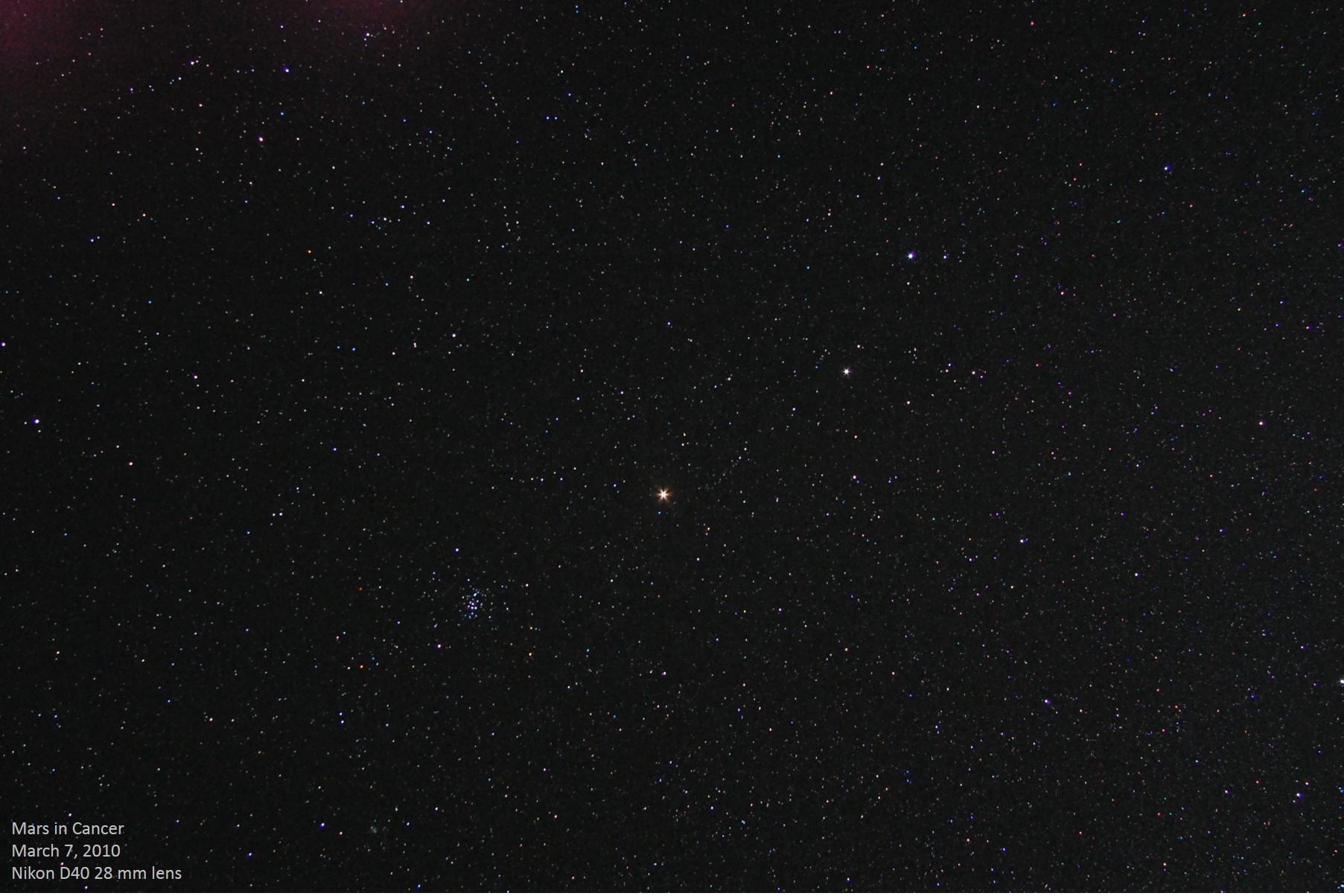 |
March 2010 Mars went through an aphelic opposition in late January 2010, which concluded at the back end of its retrograde loop through Cancer, shown here almost exactly at the point where he begins prograde motion. |
||
Back to main page, not that there's anything there
worth seeing ...